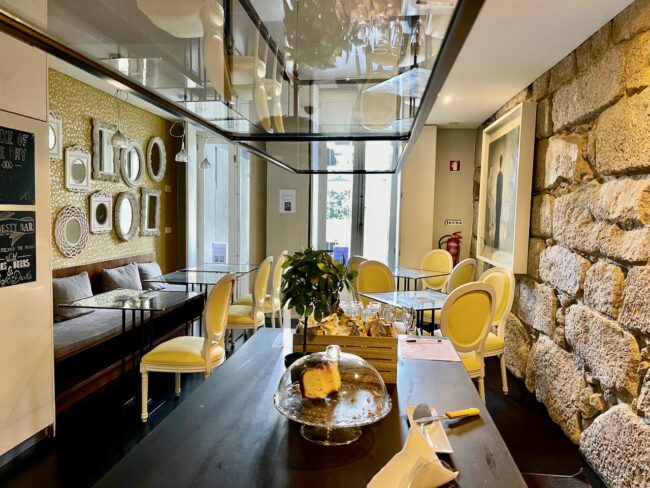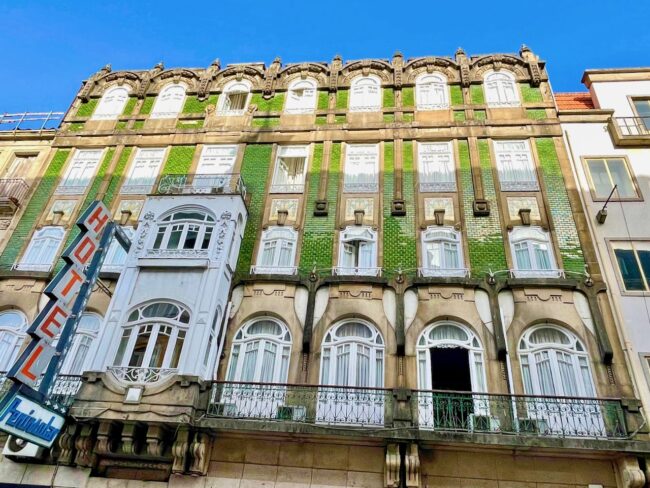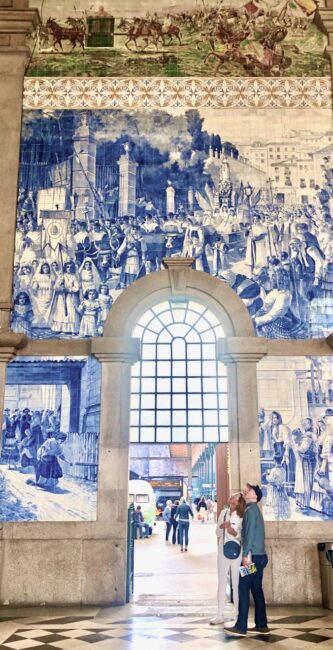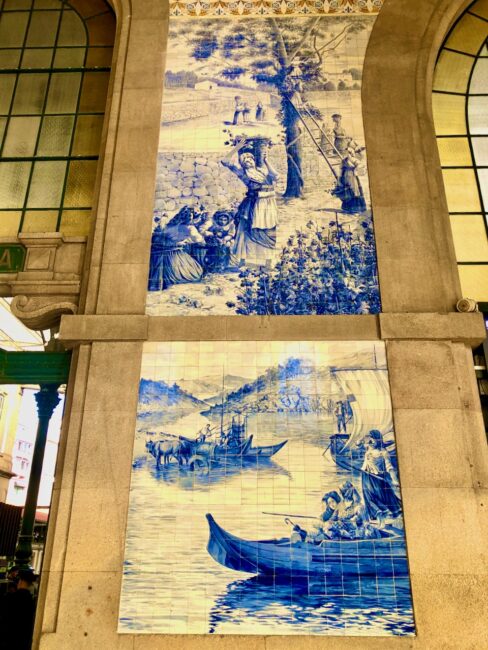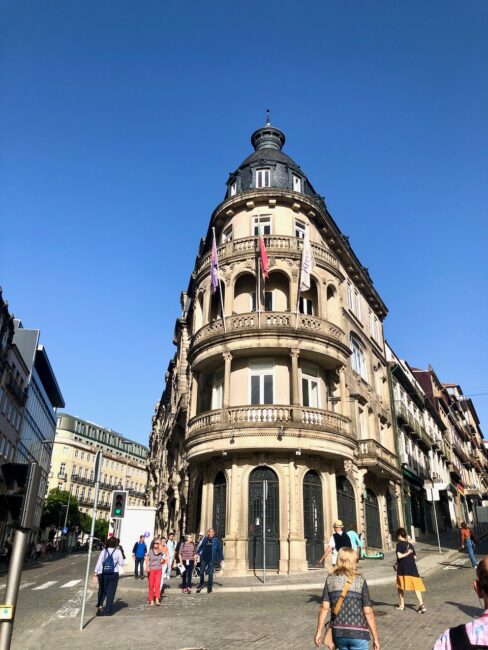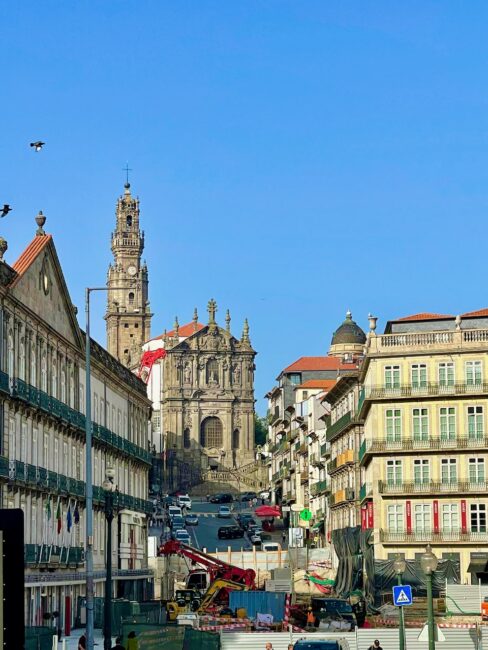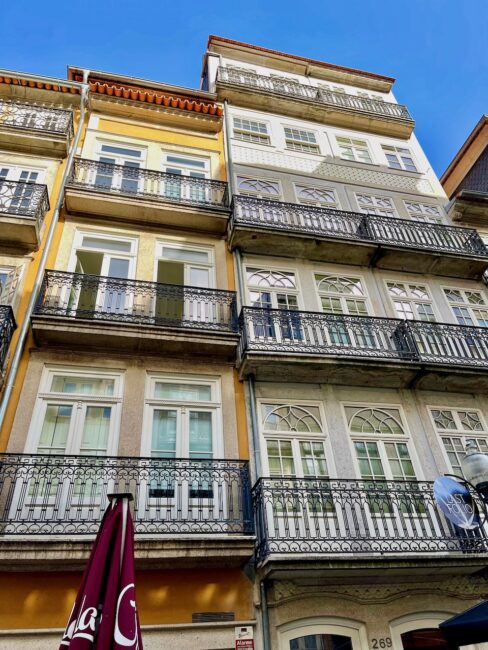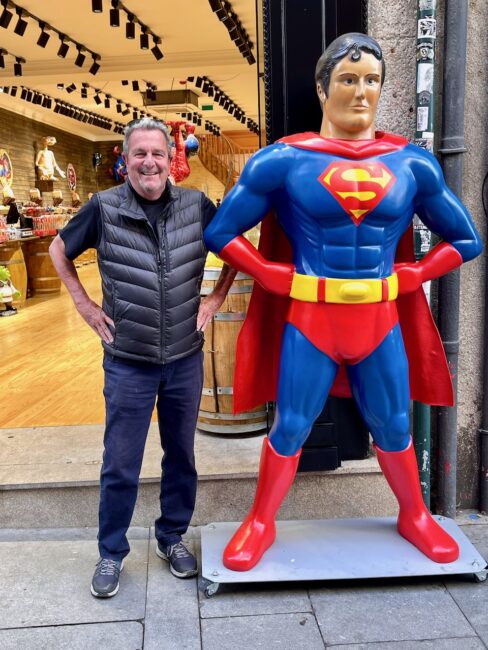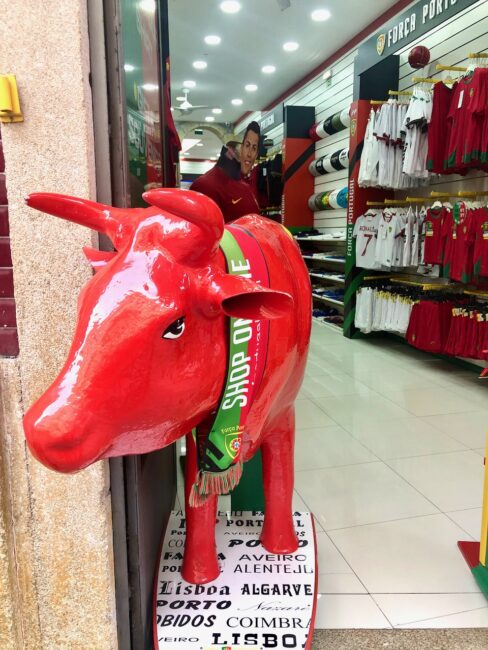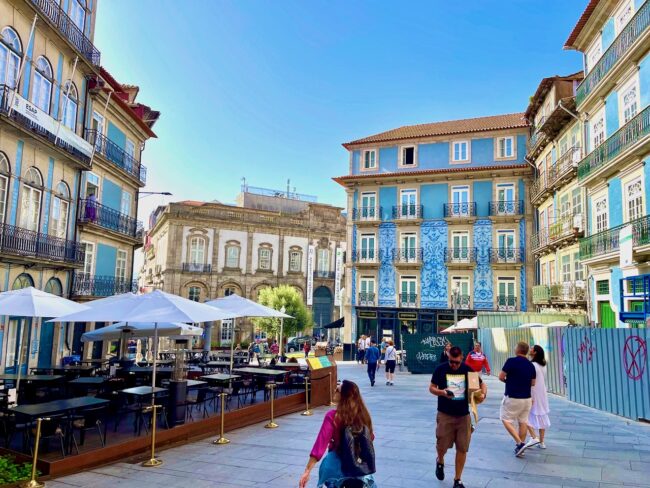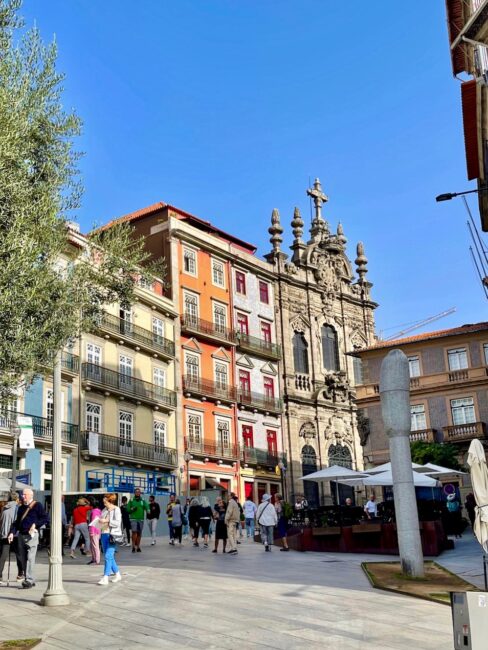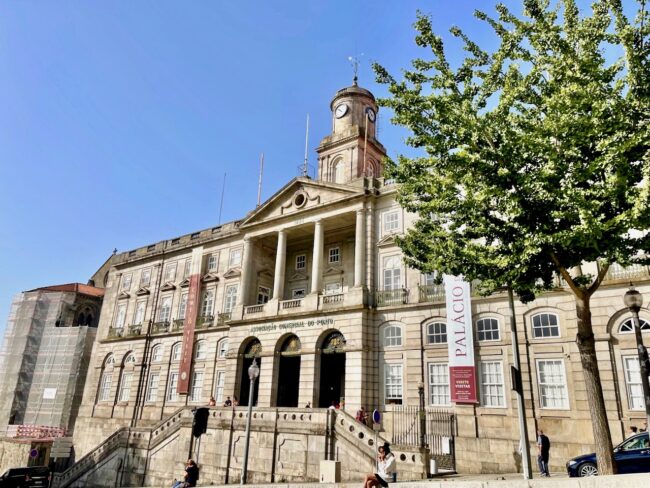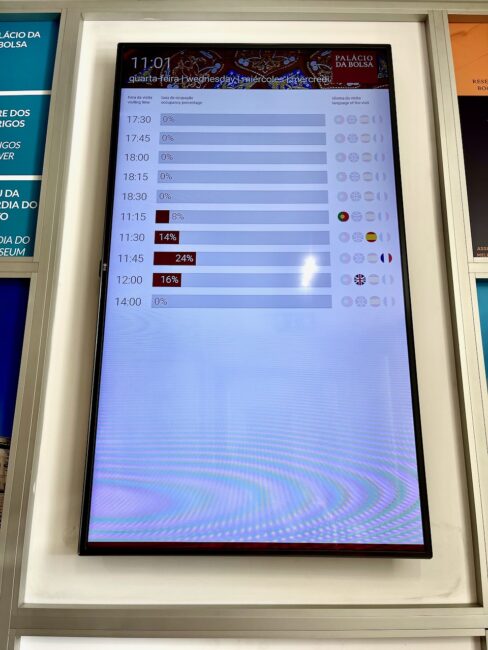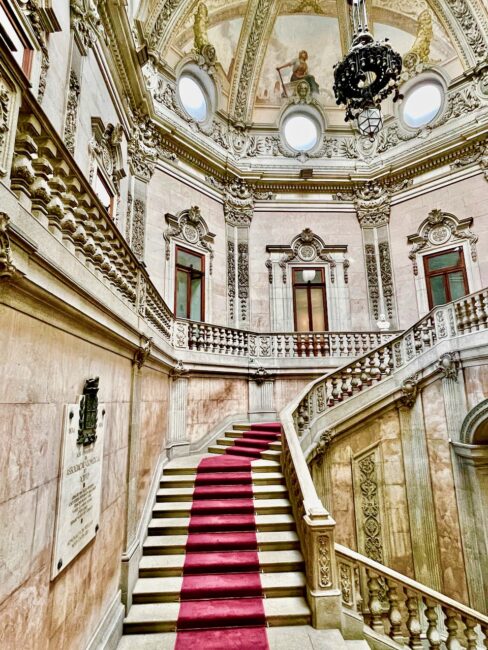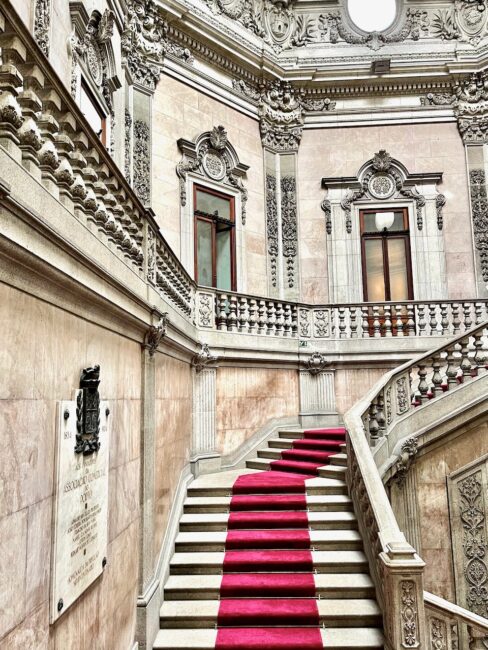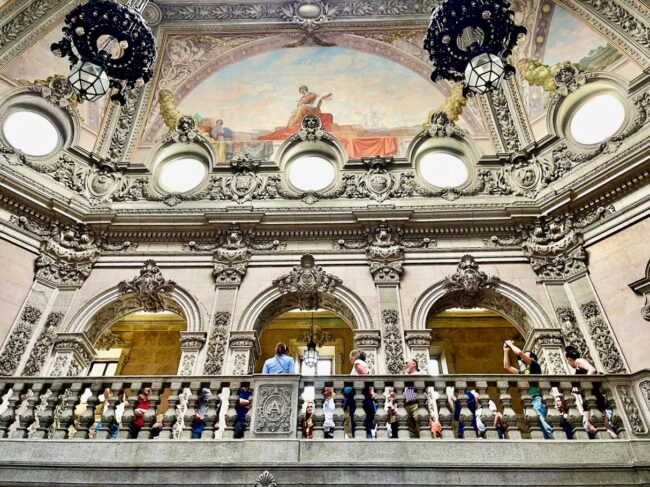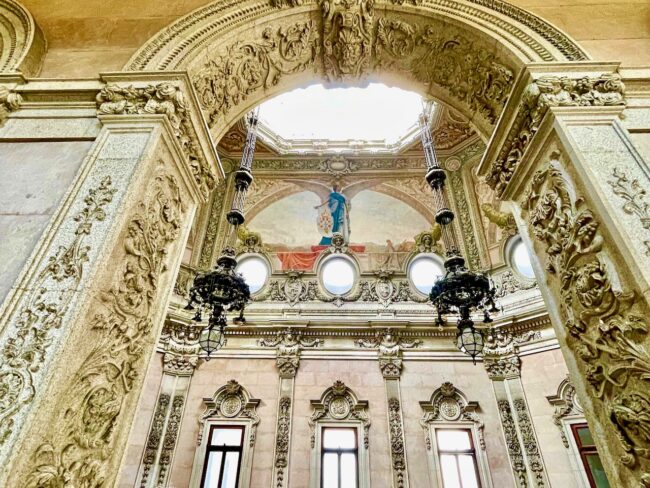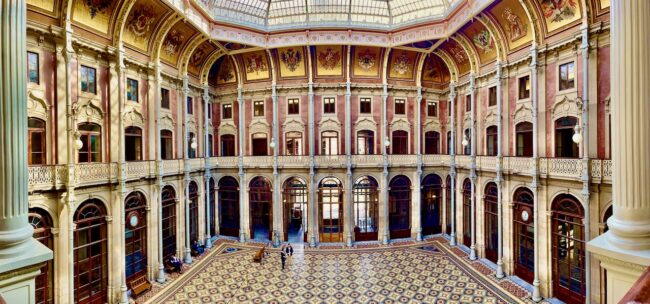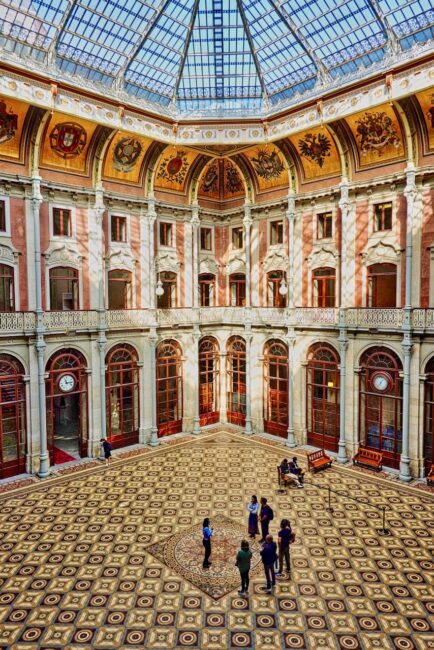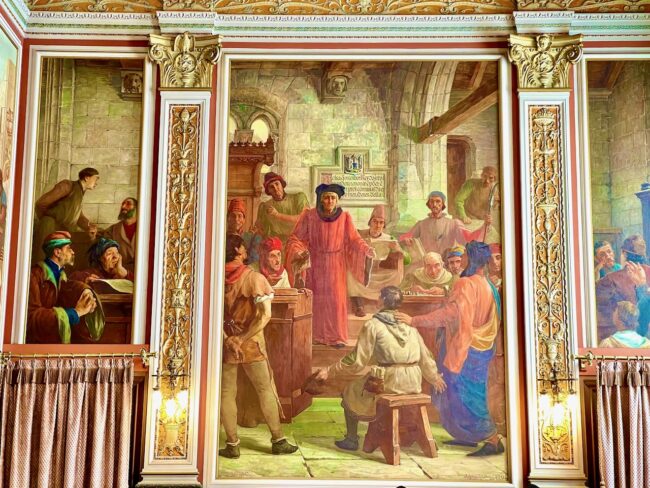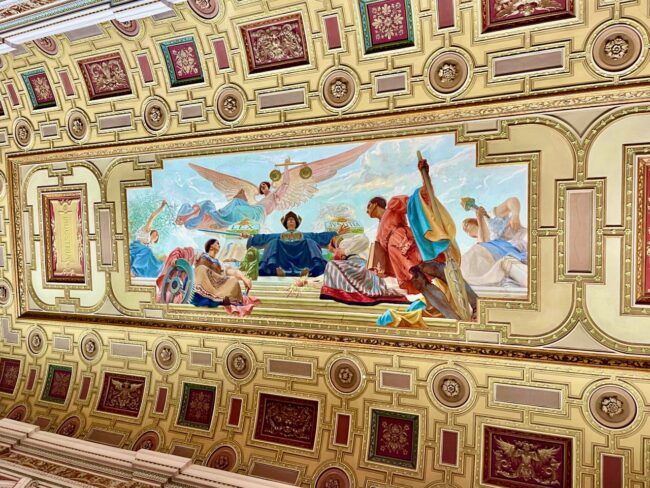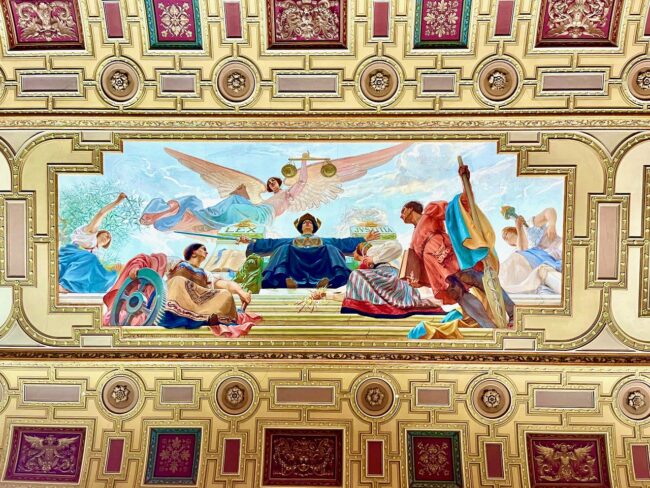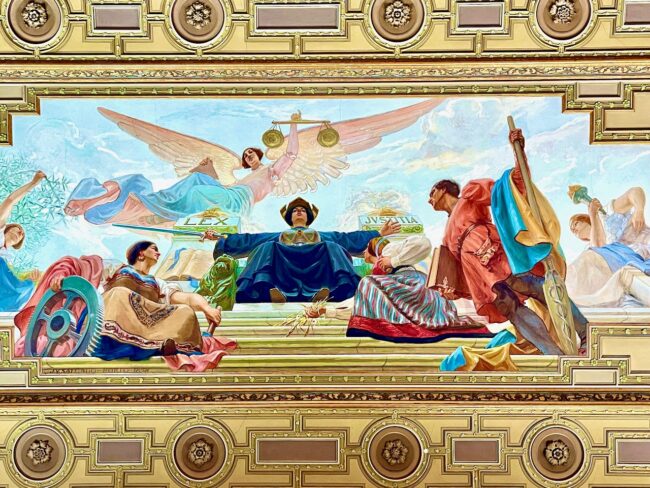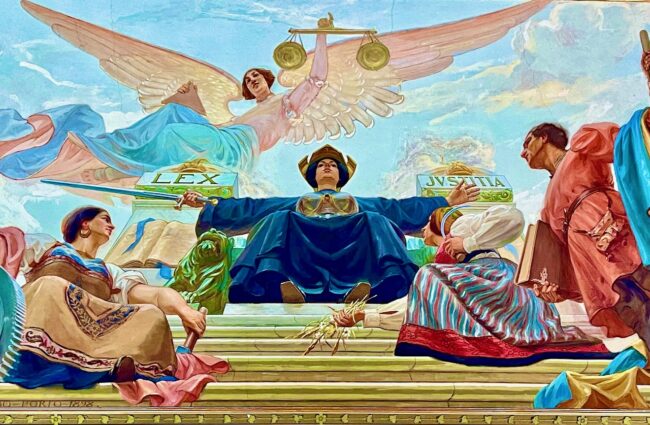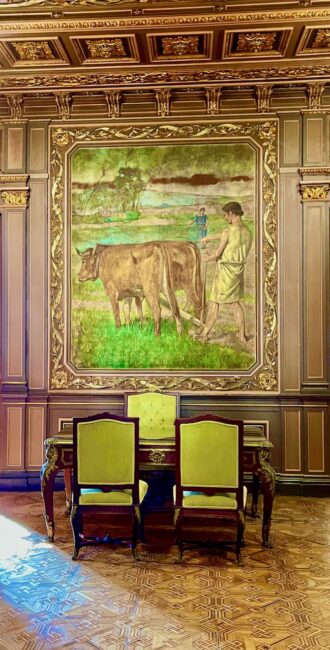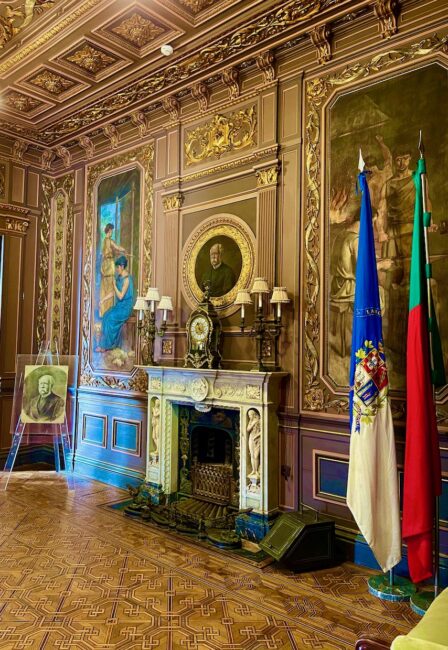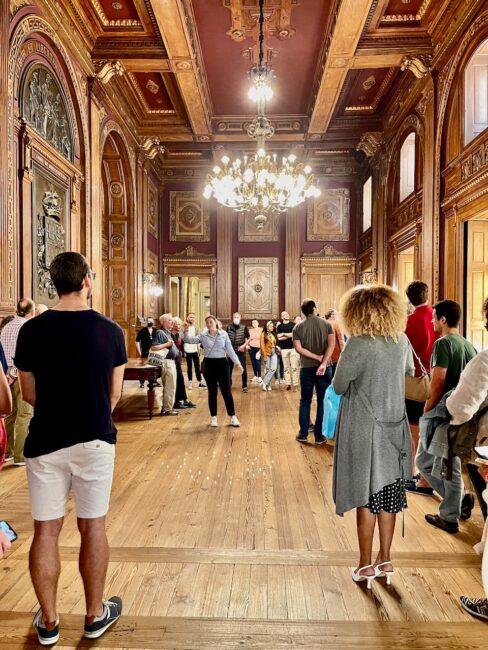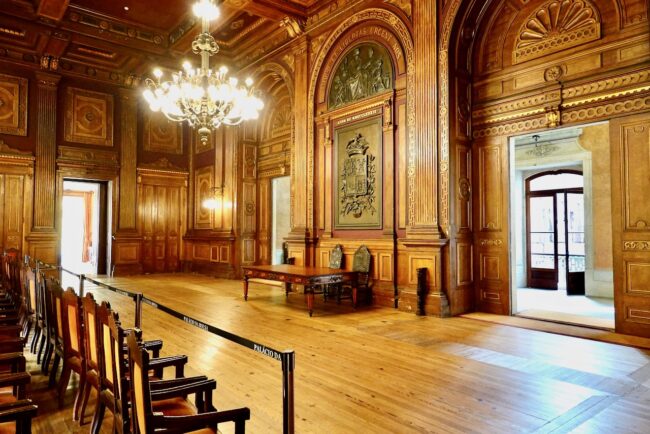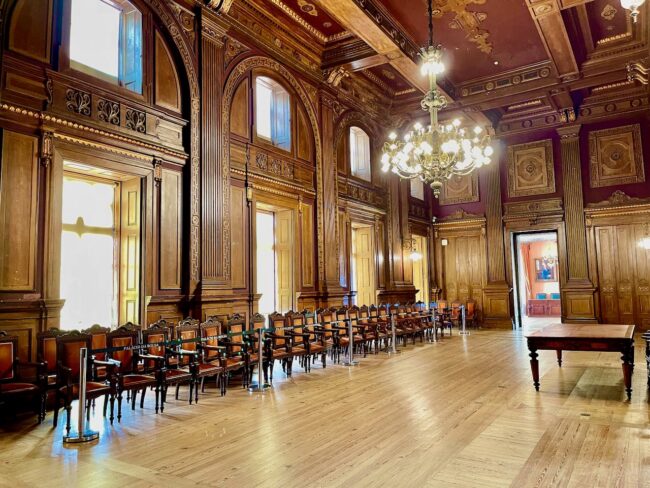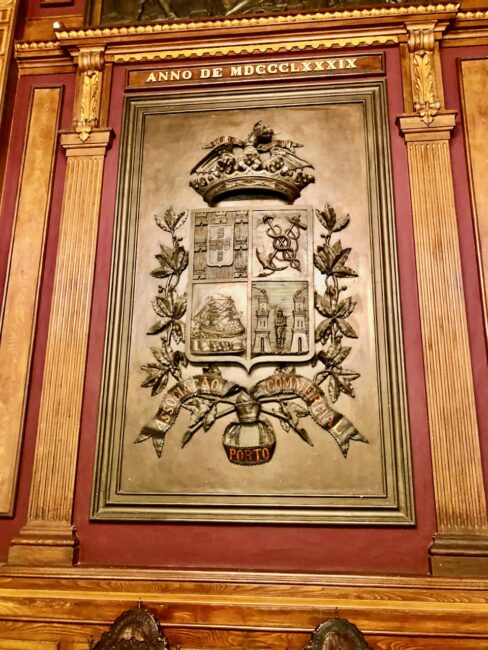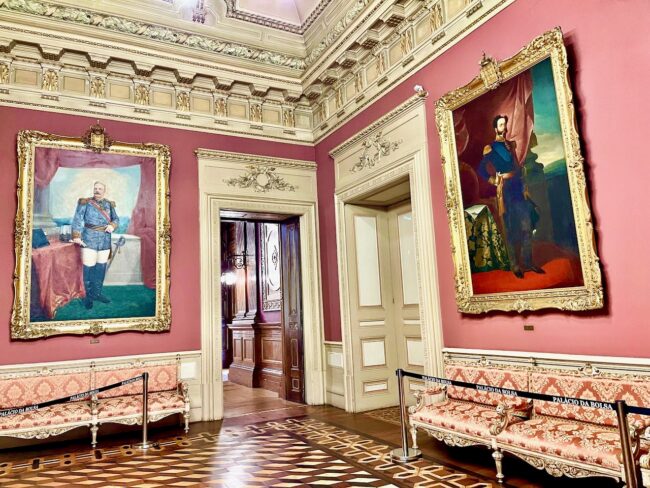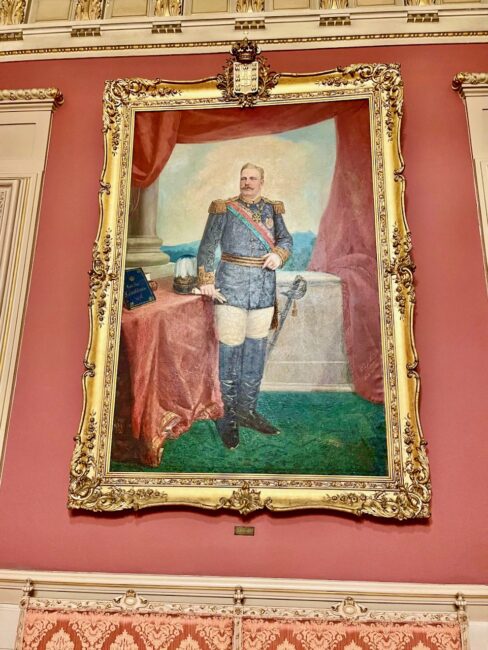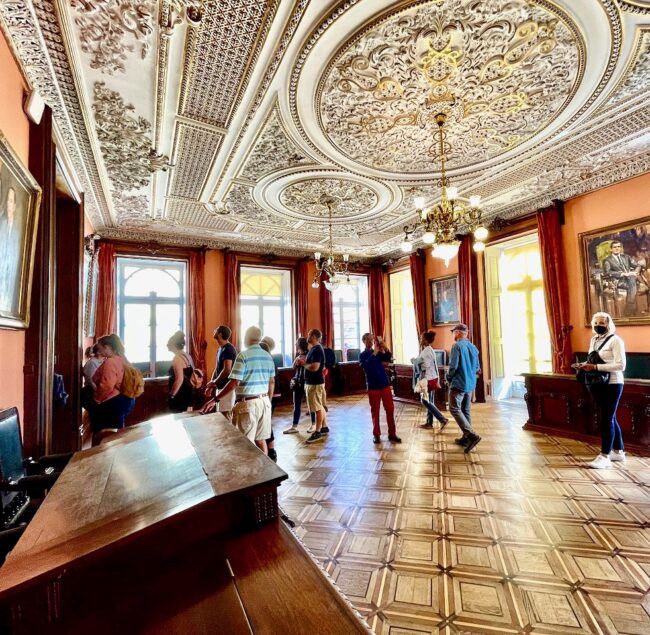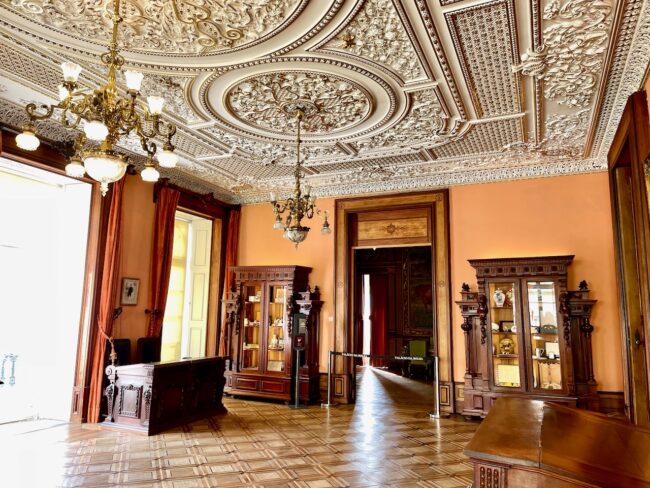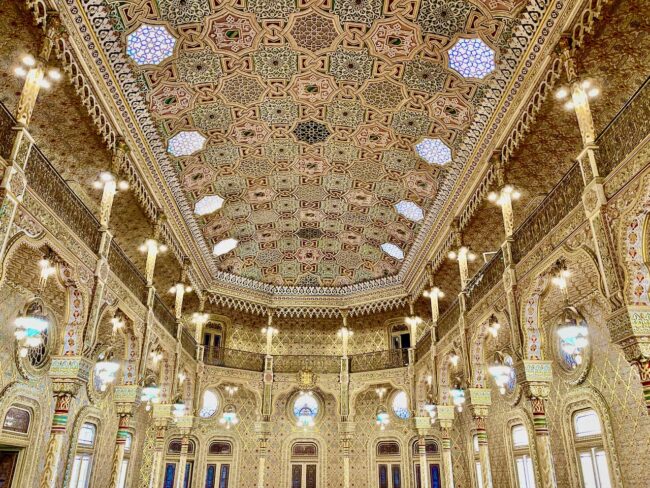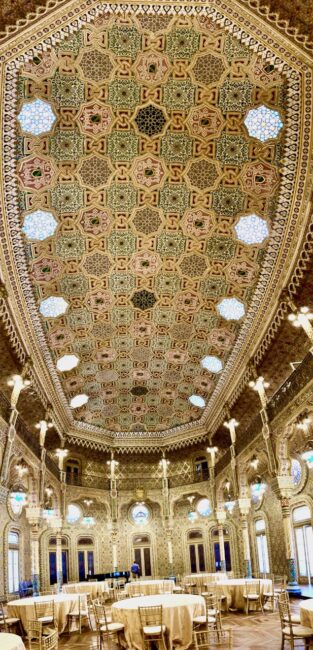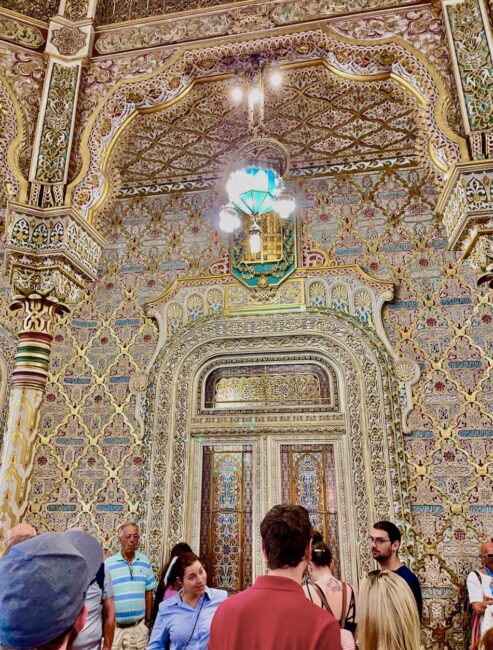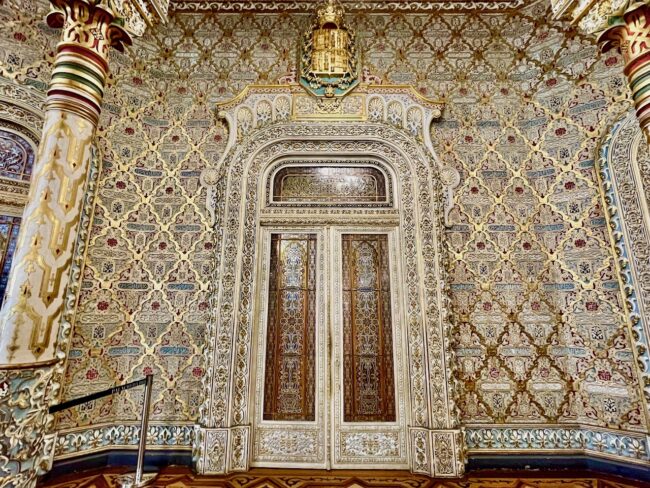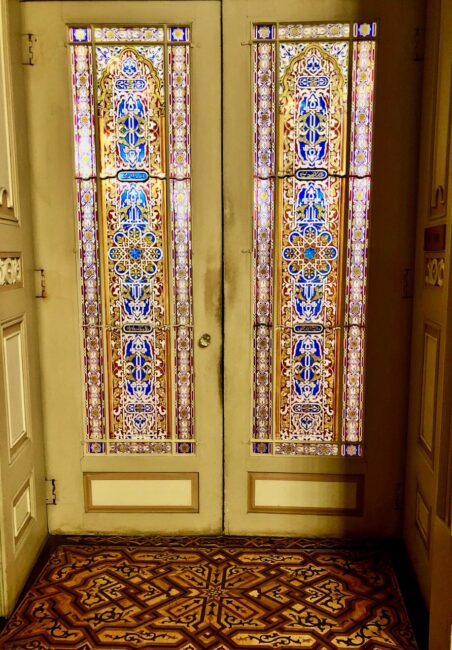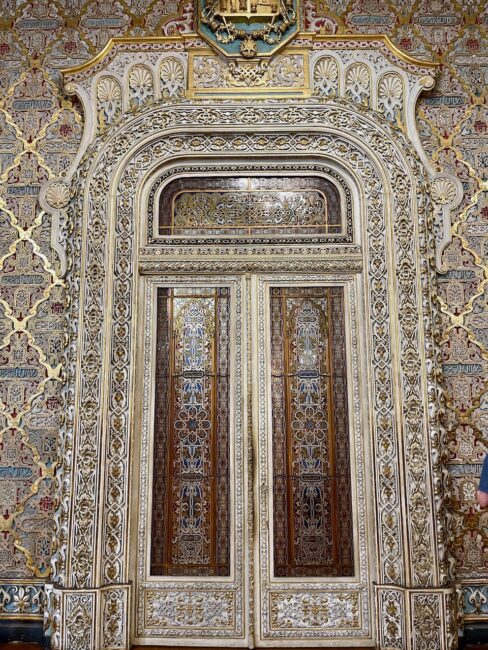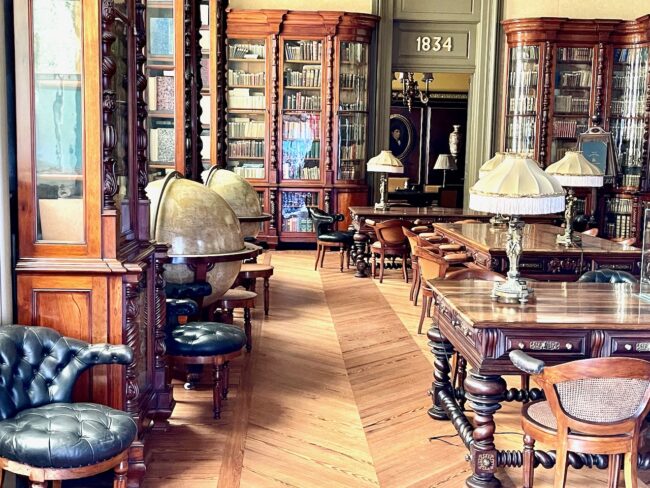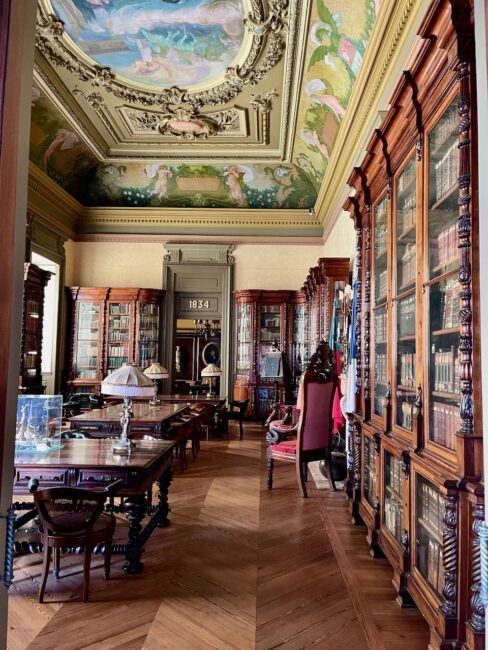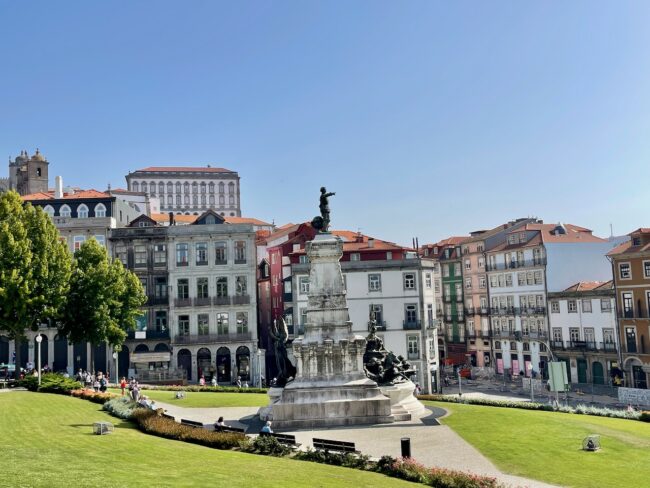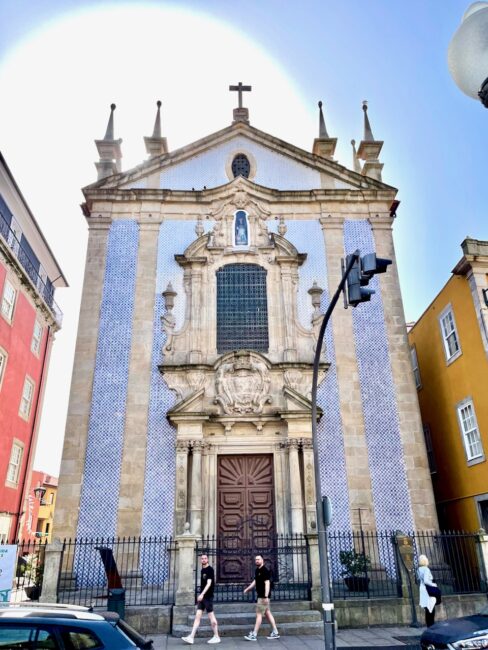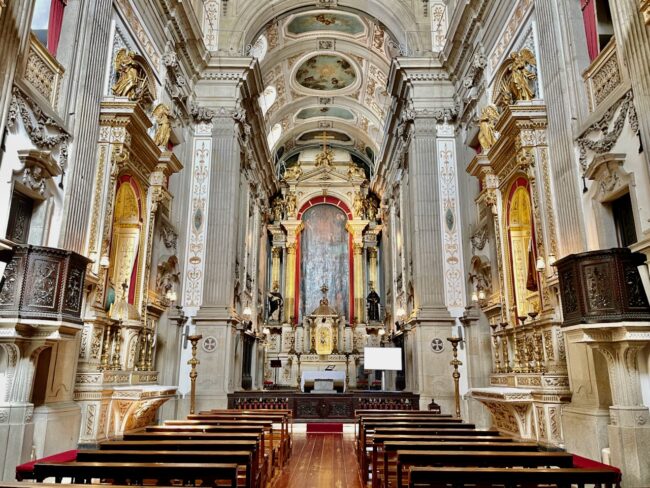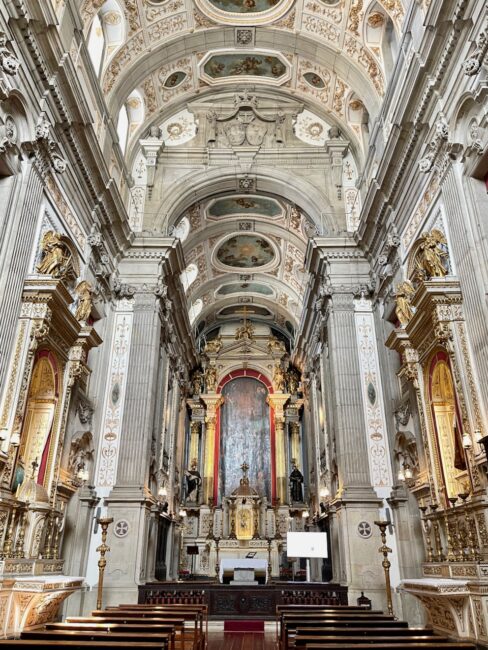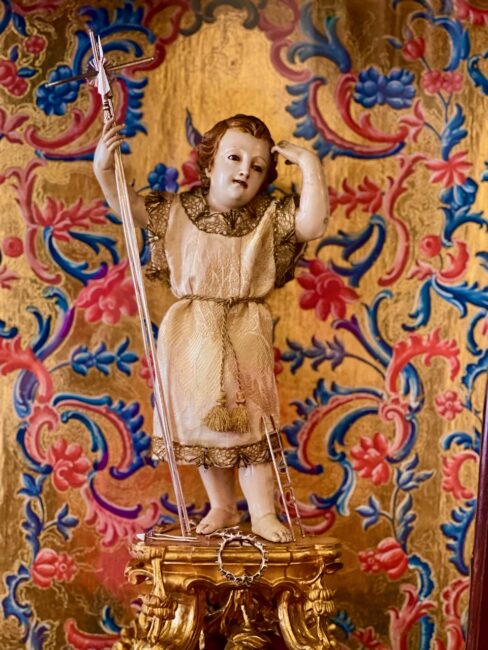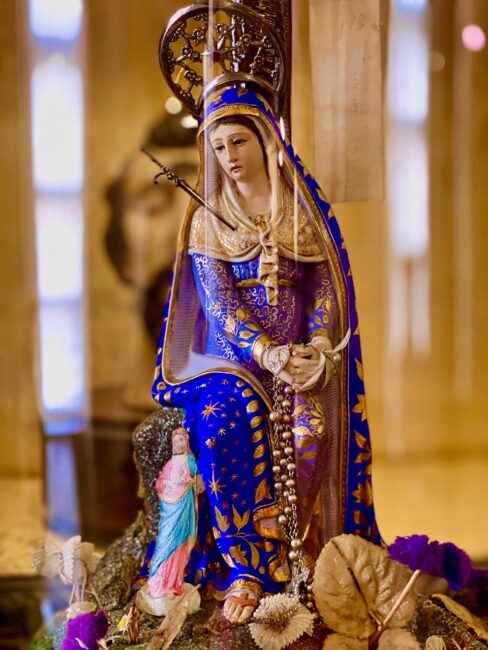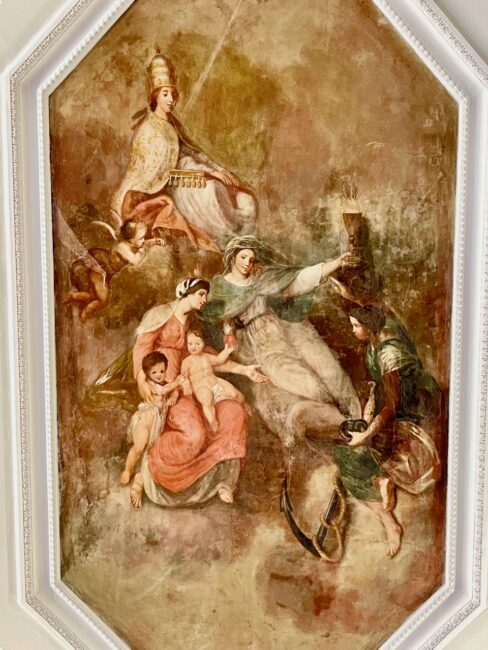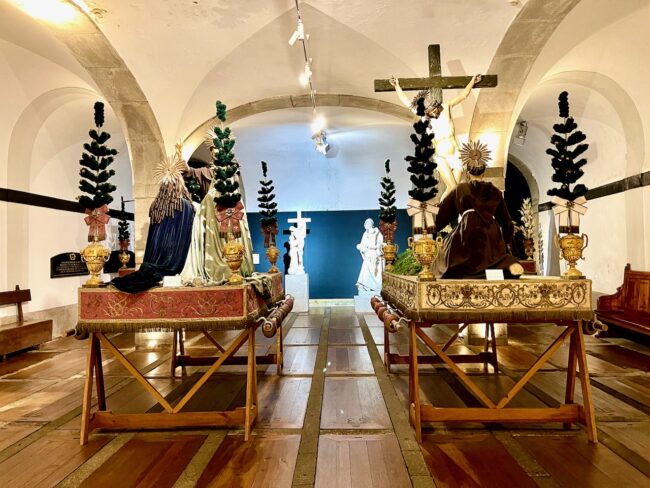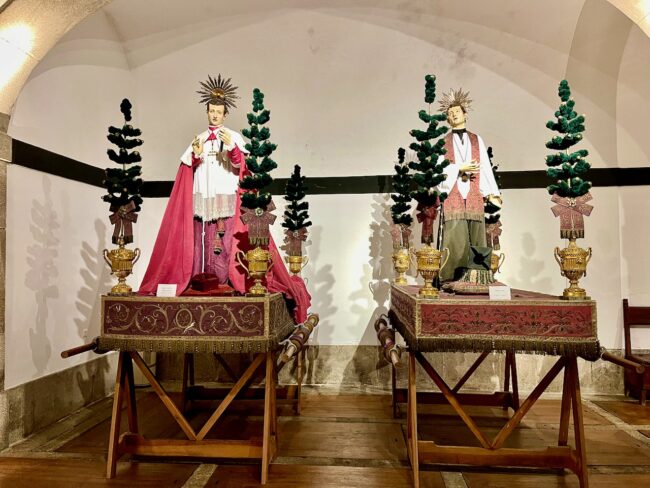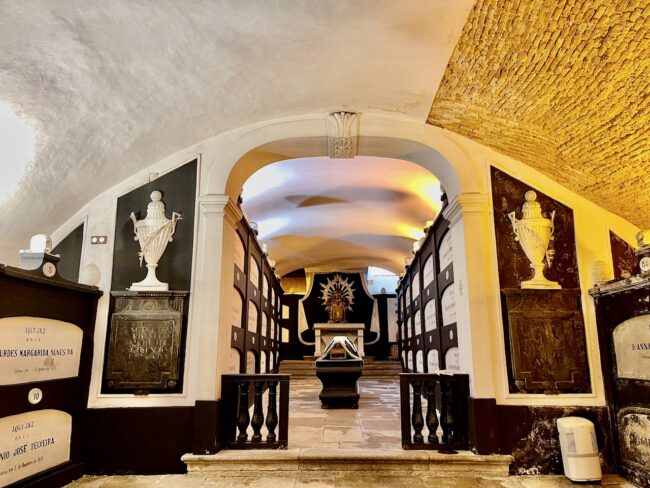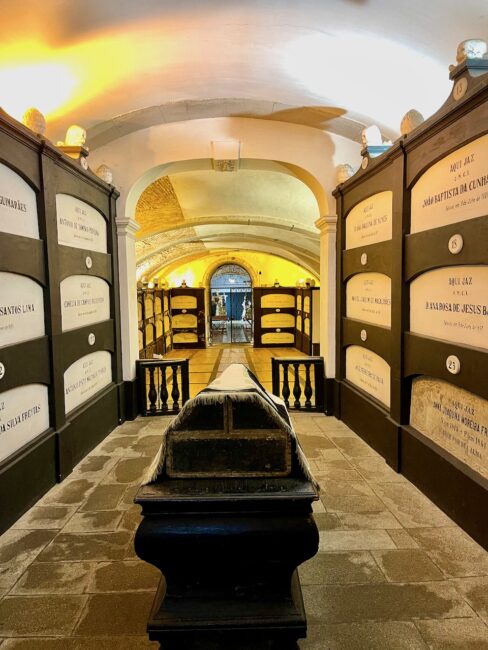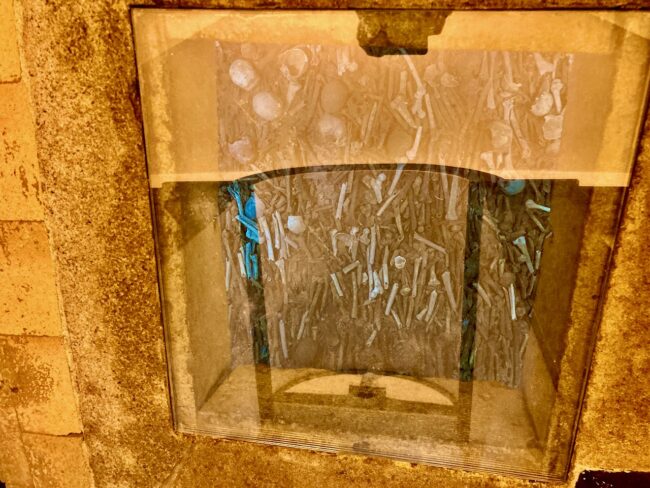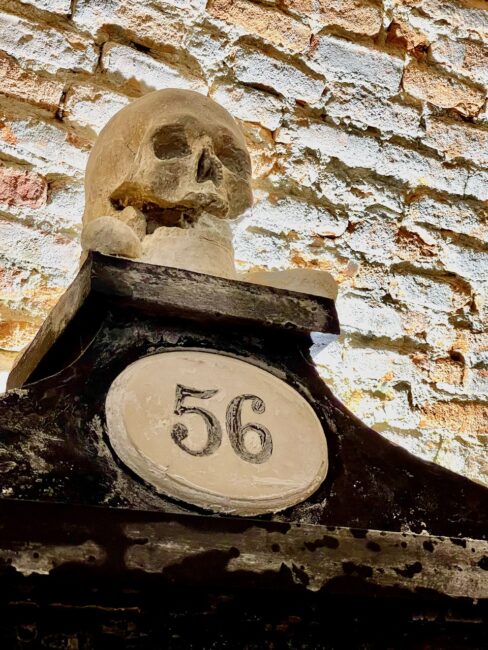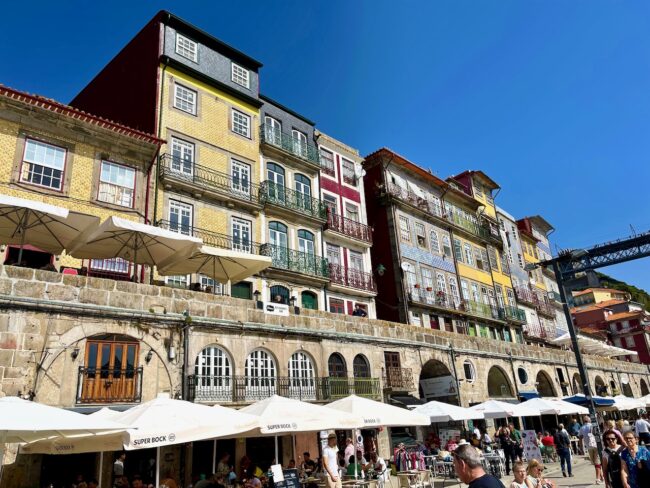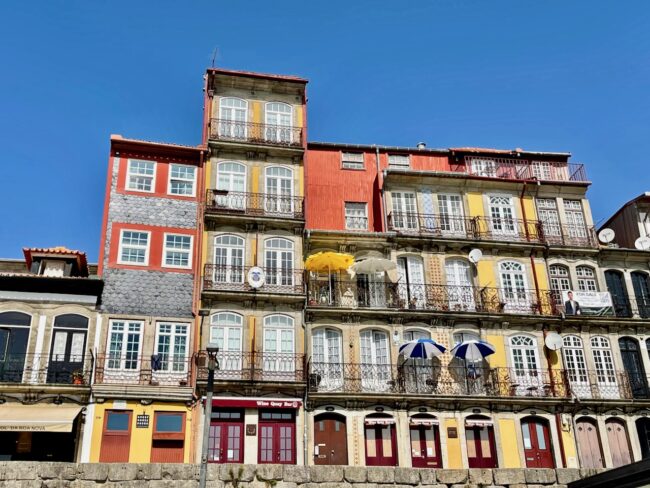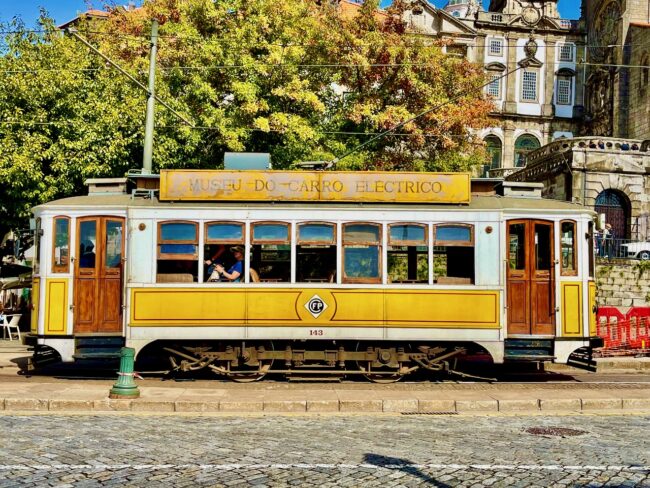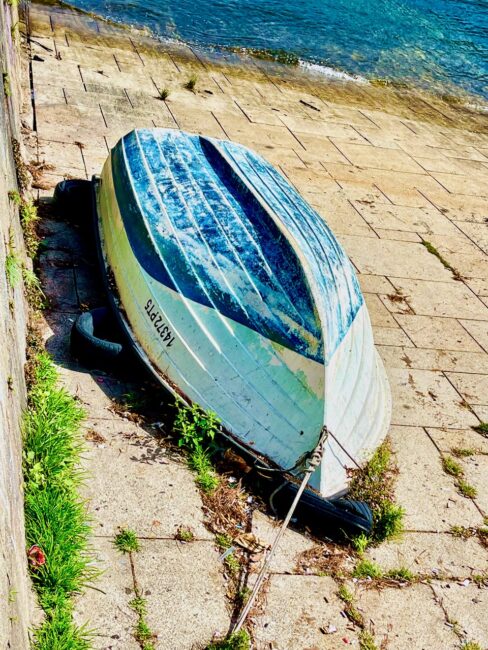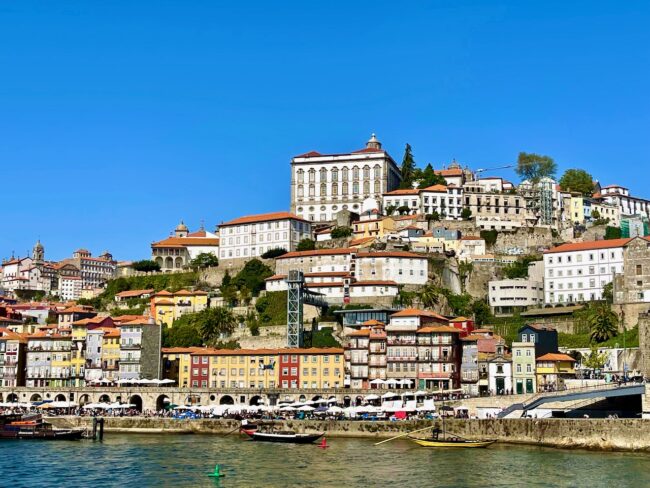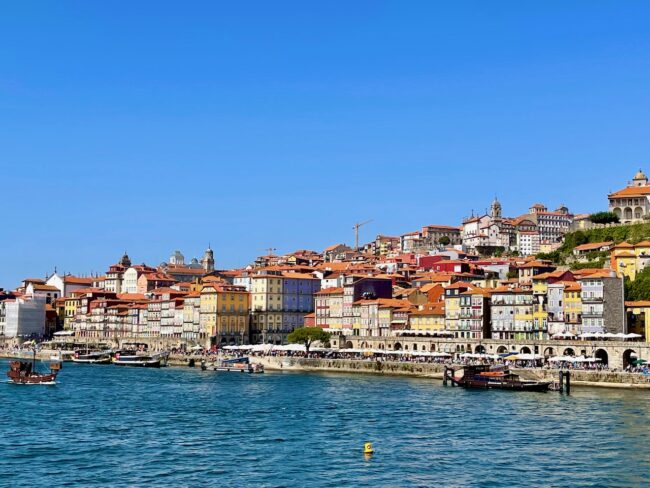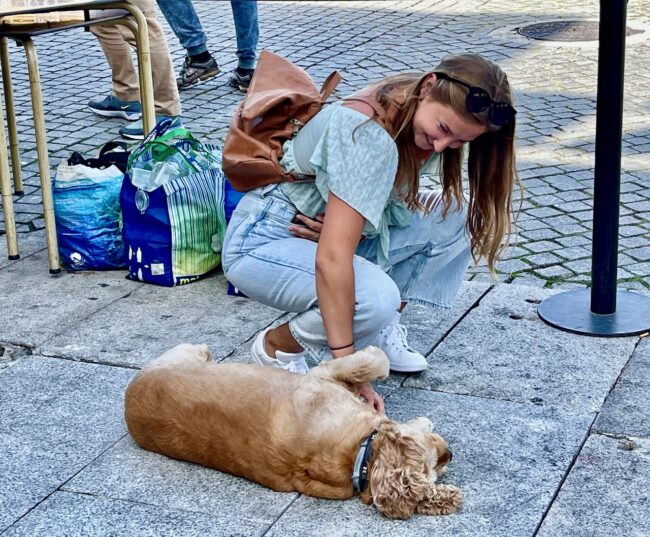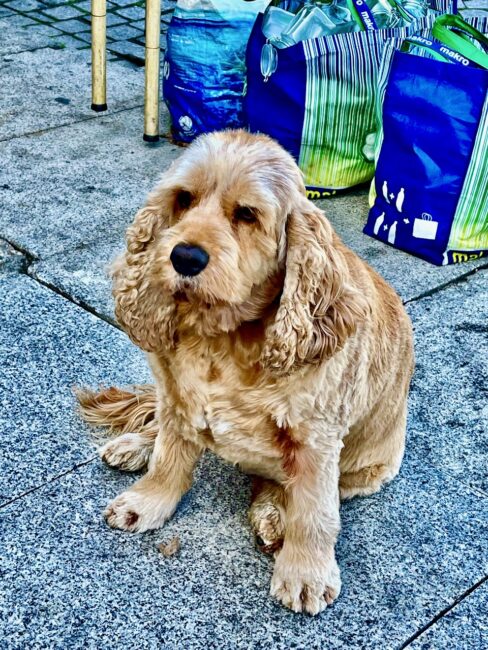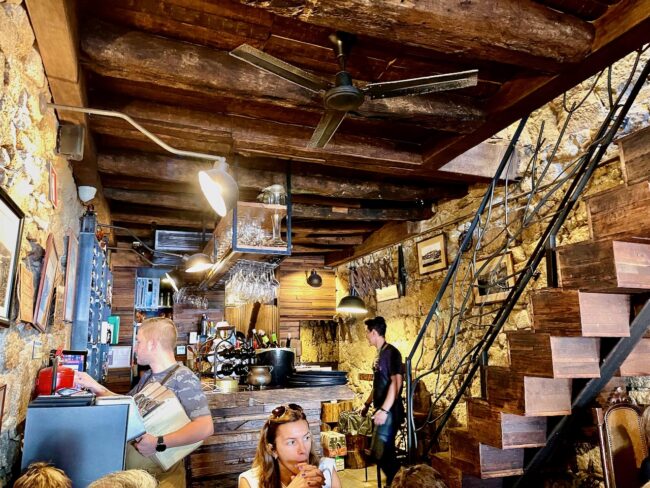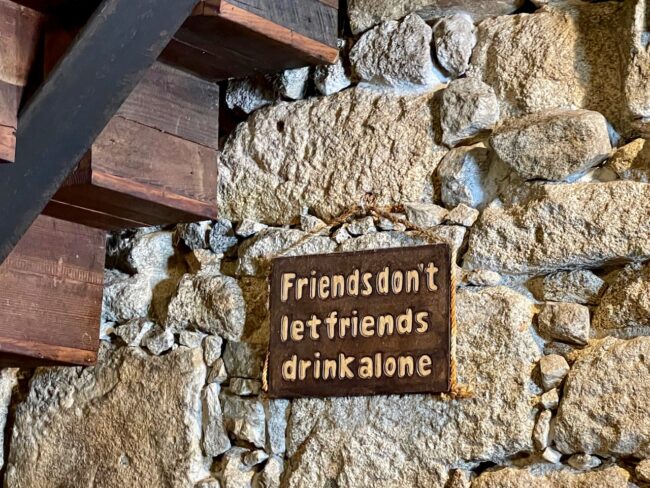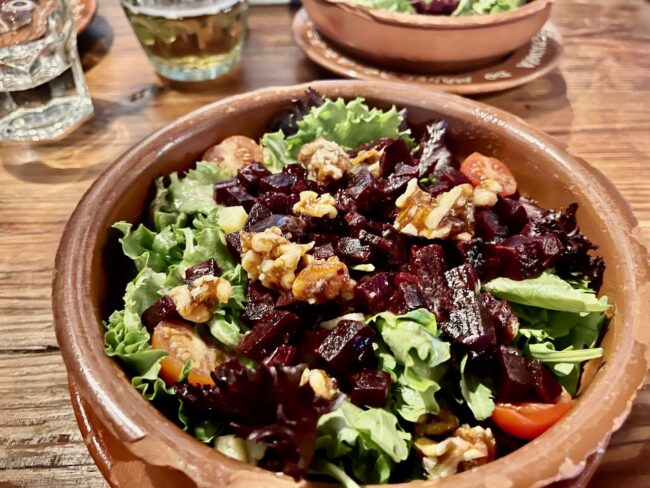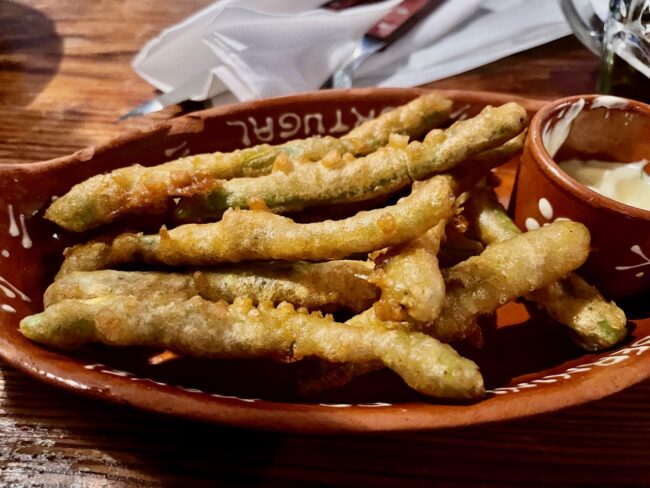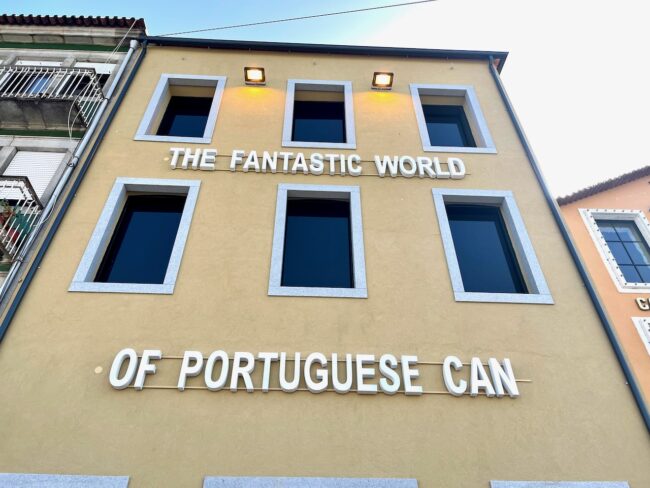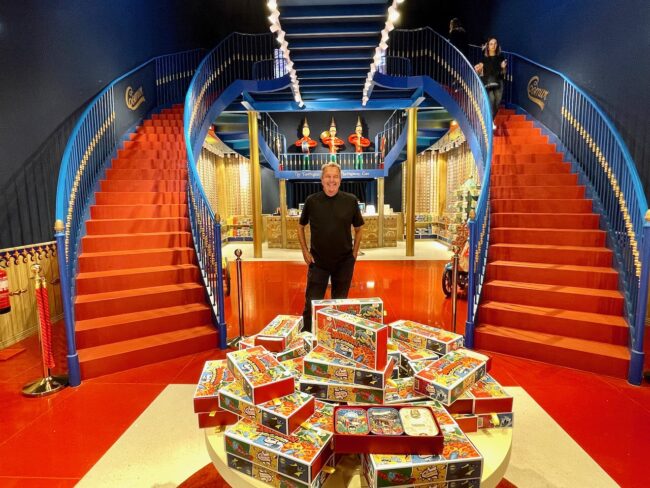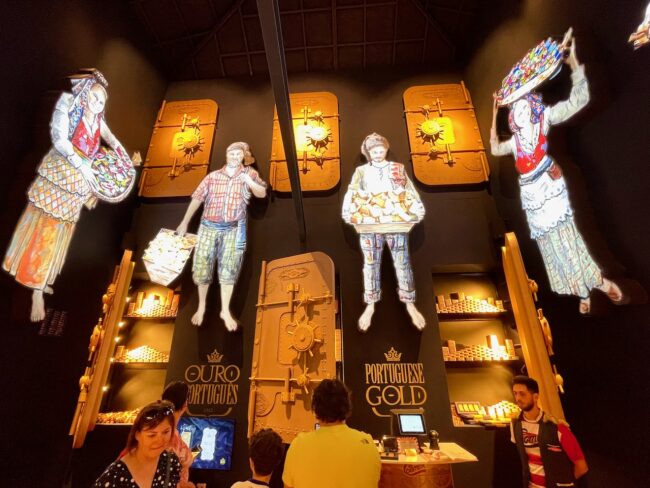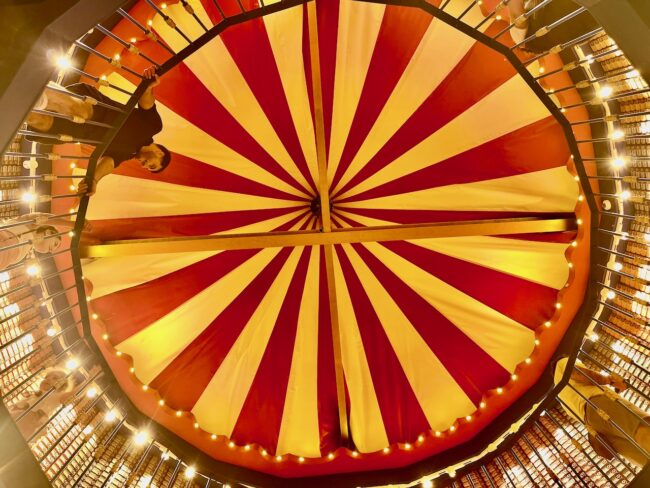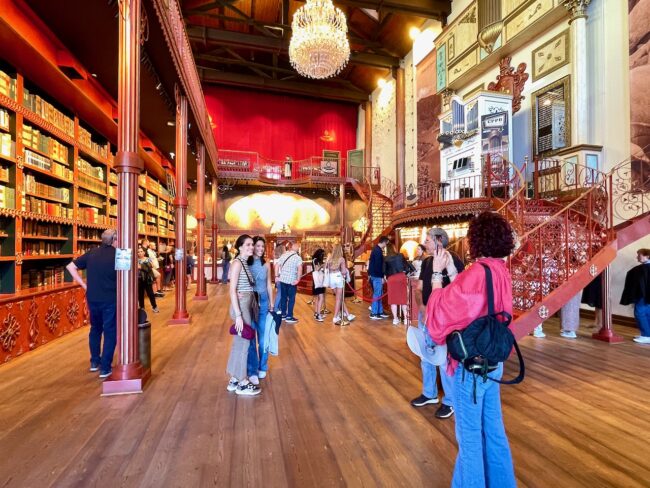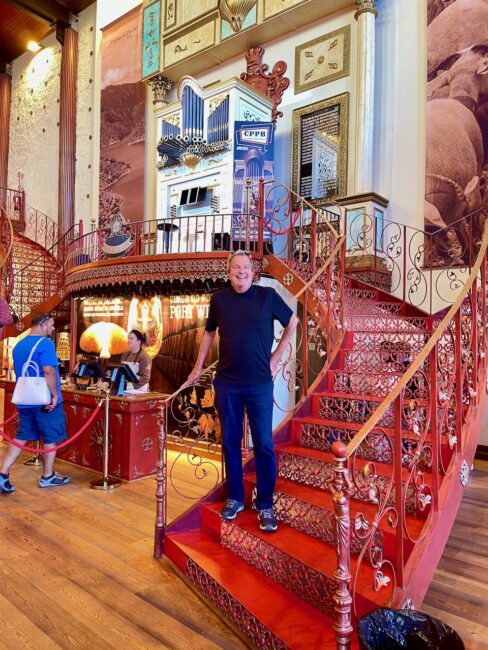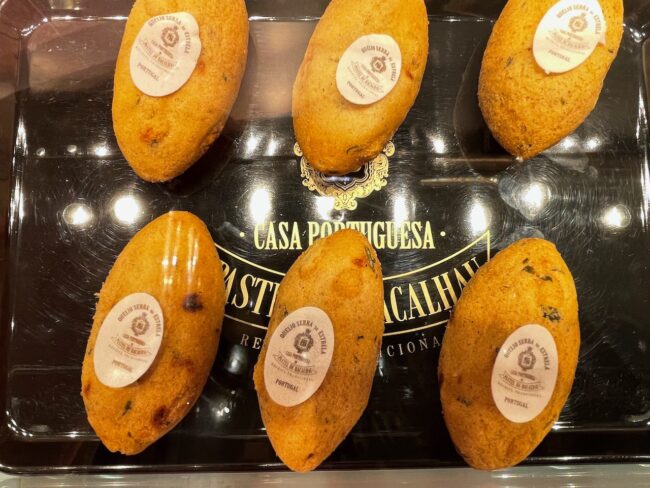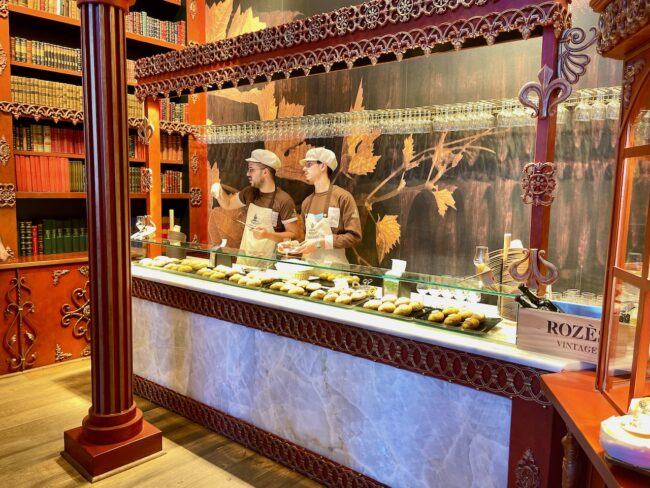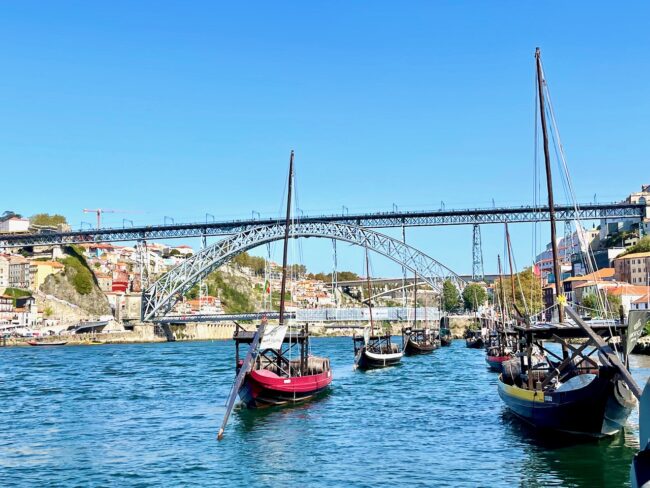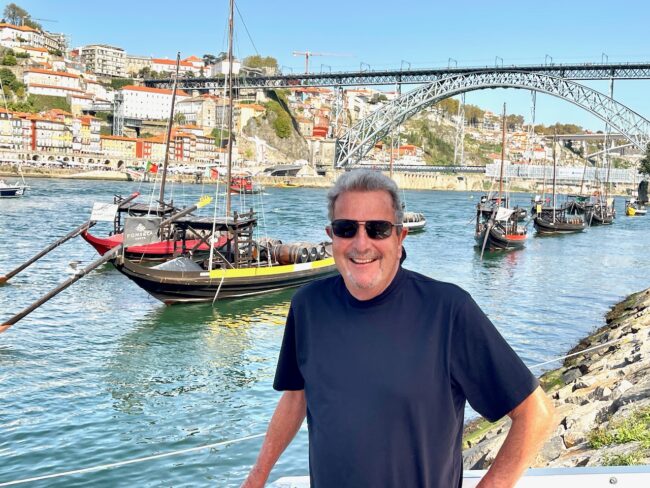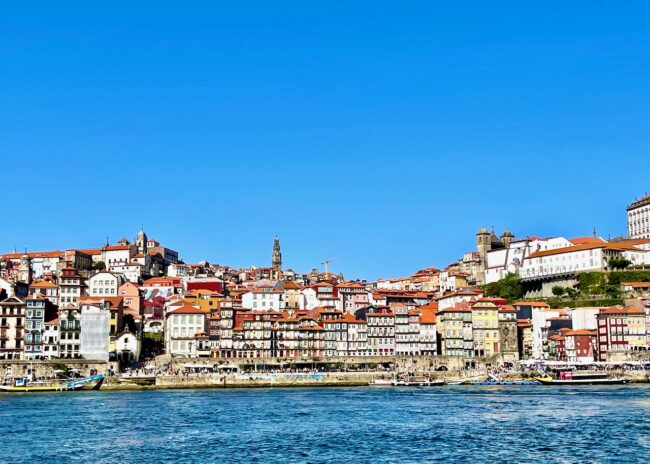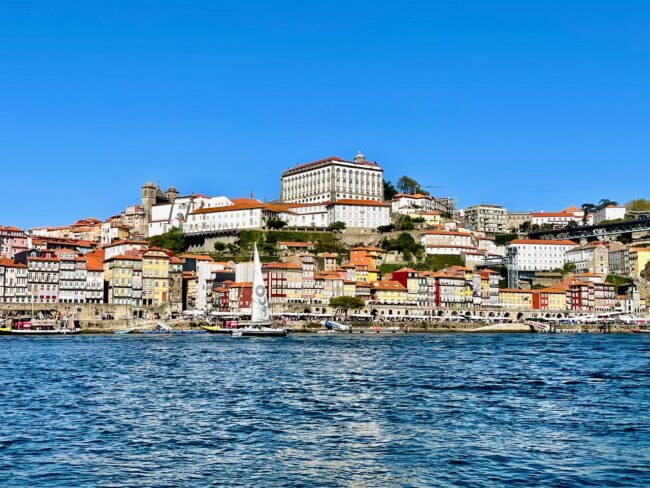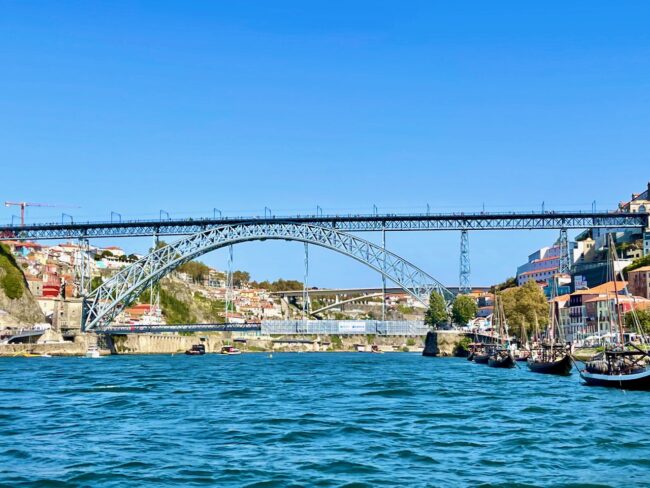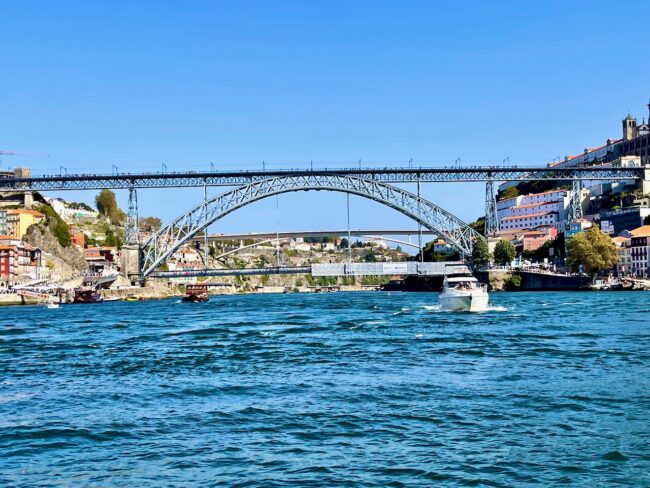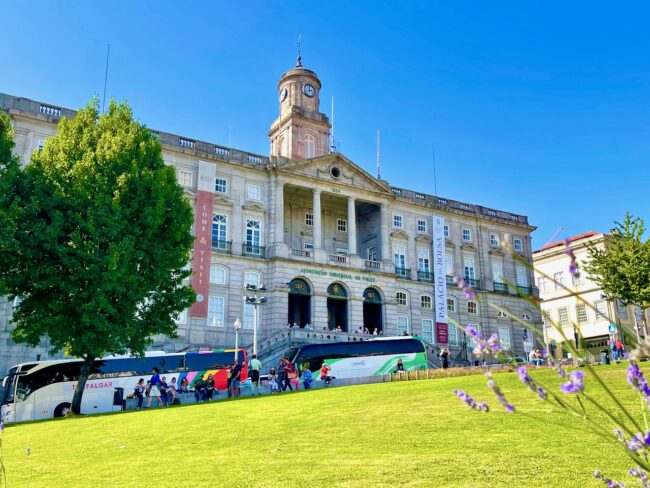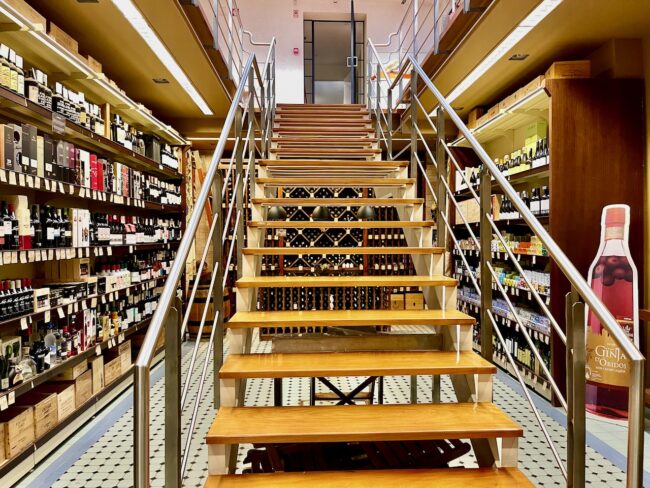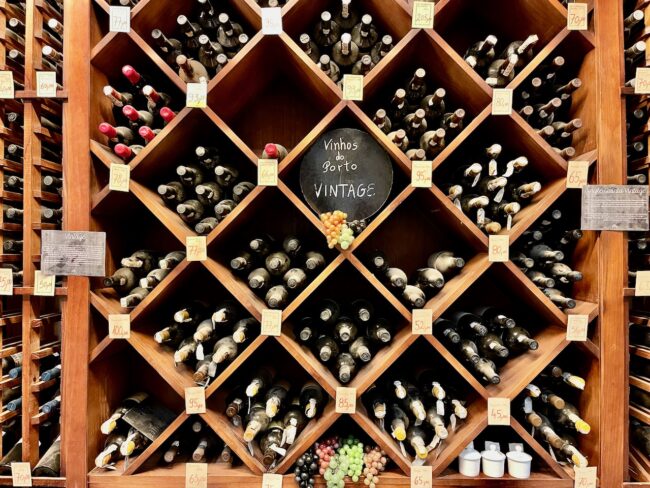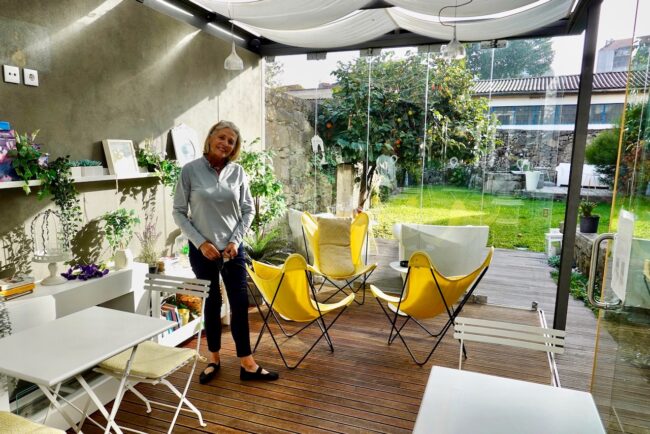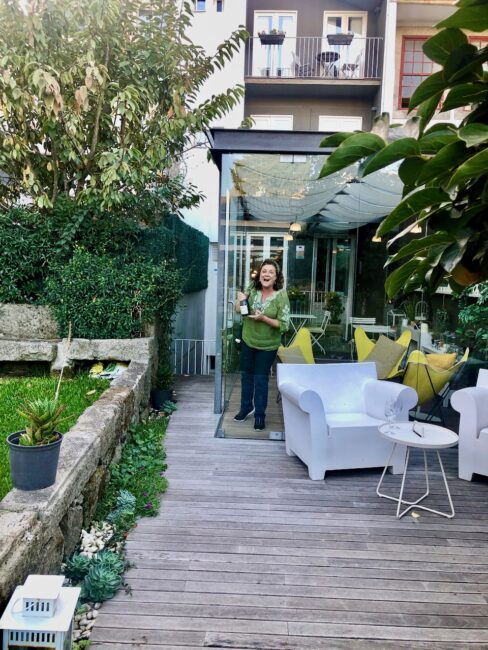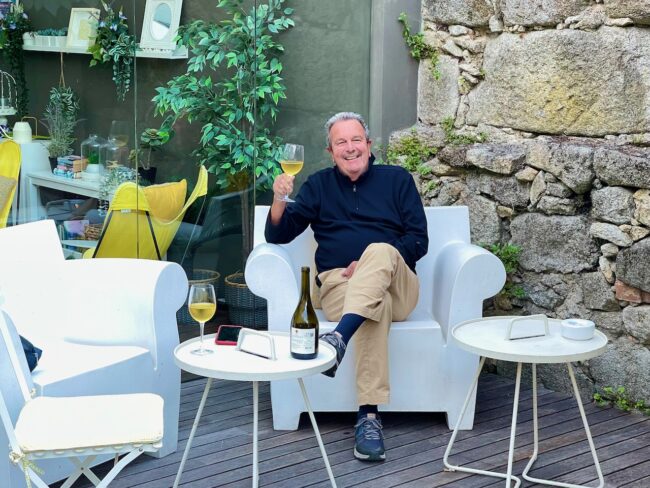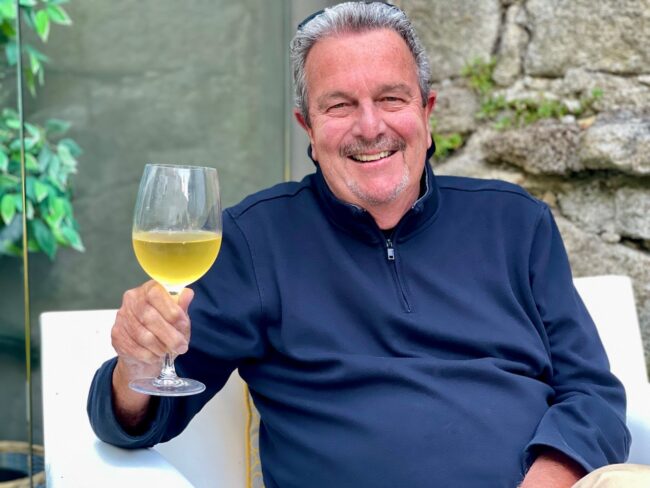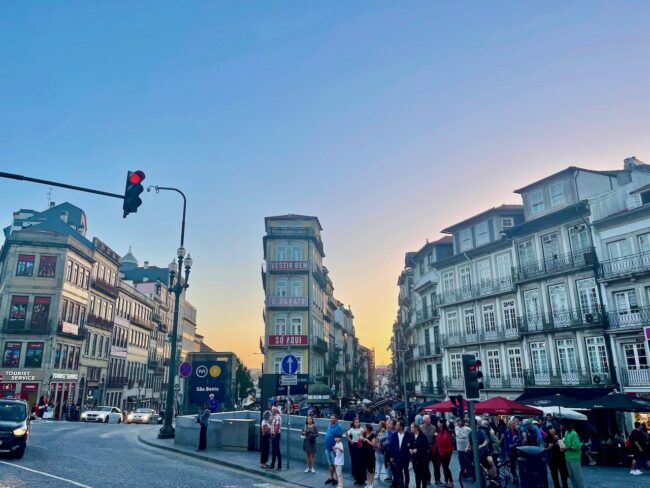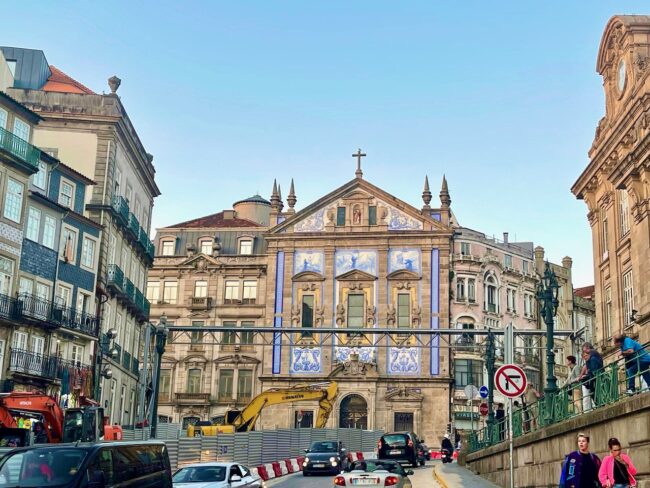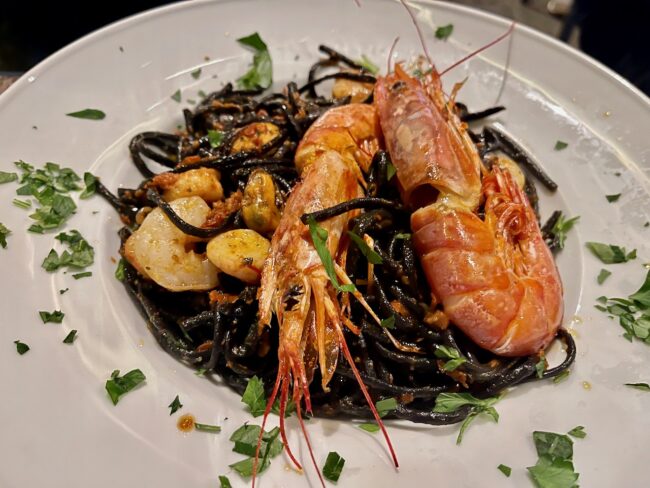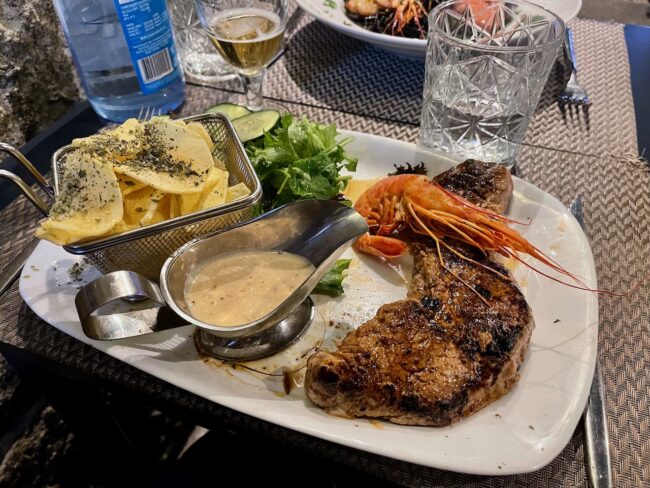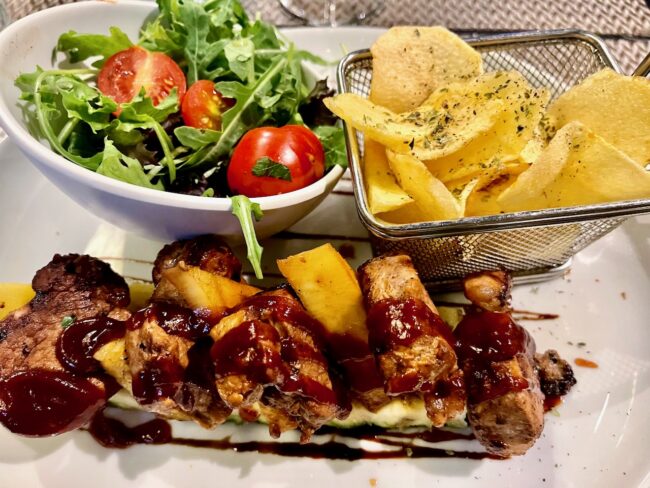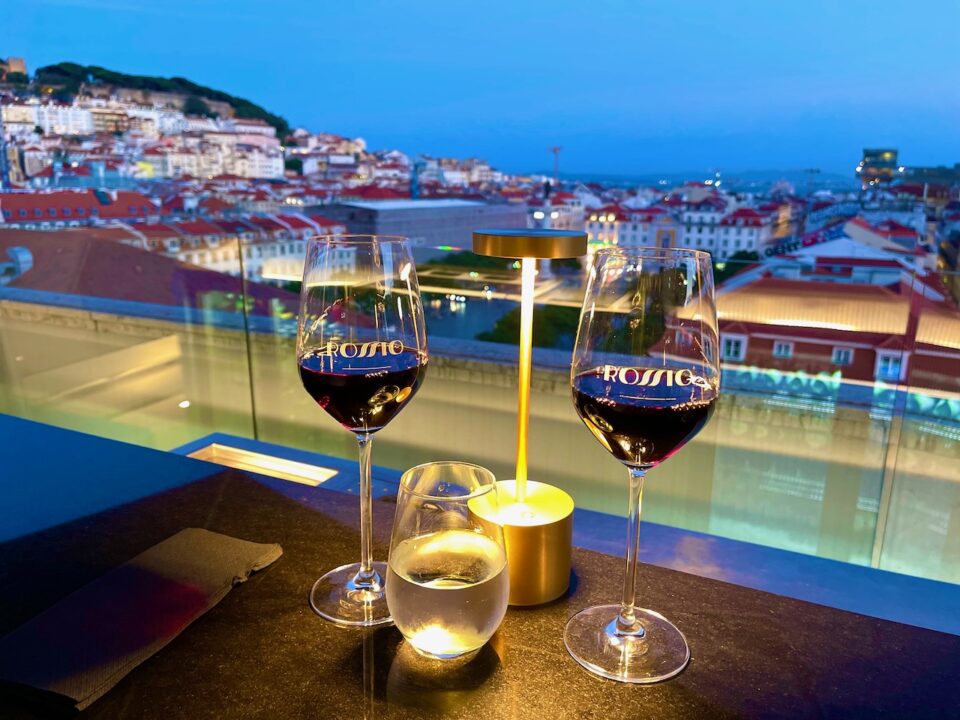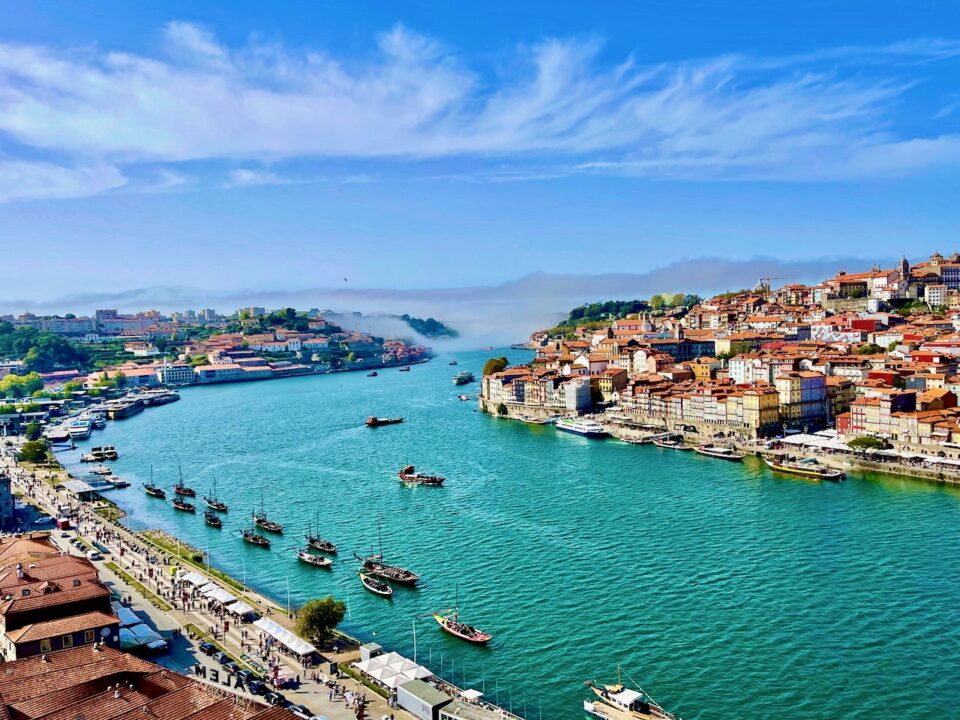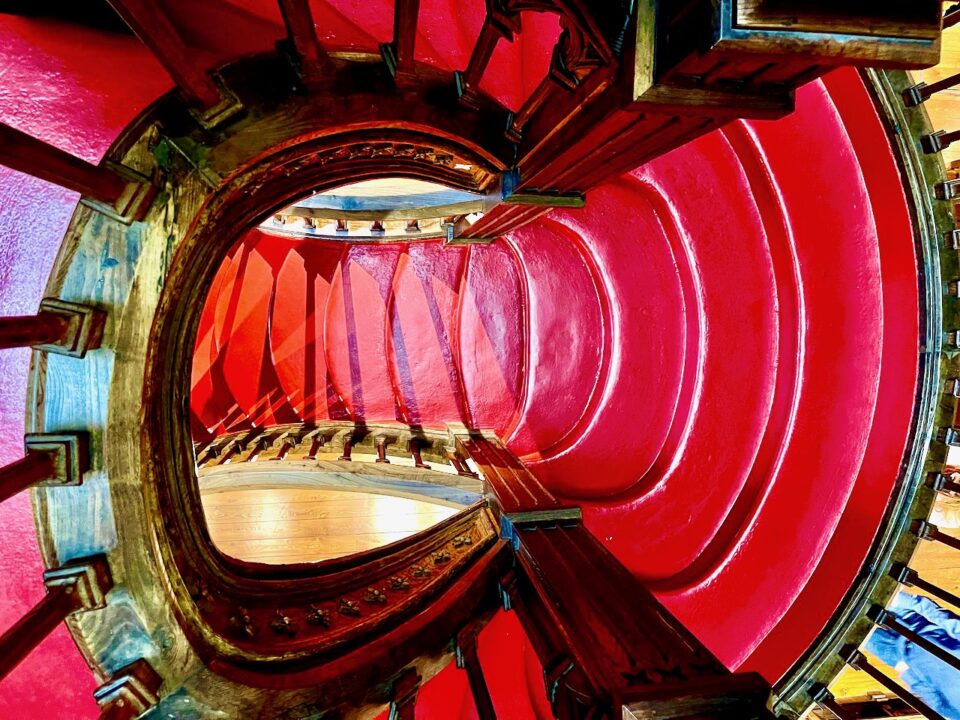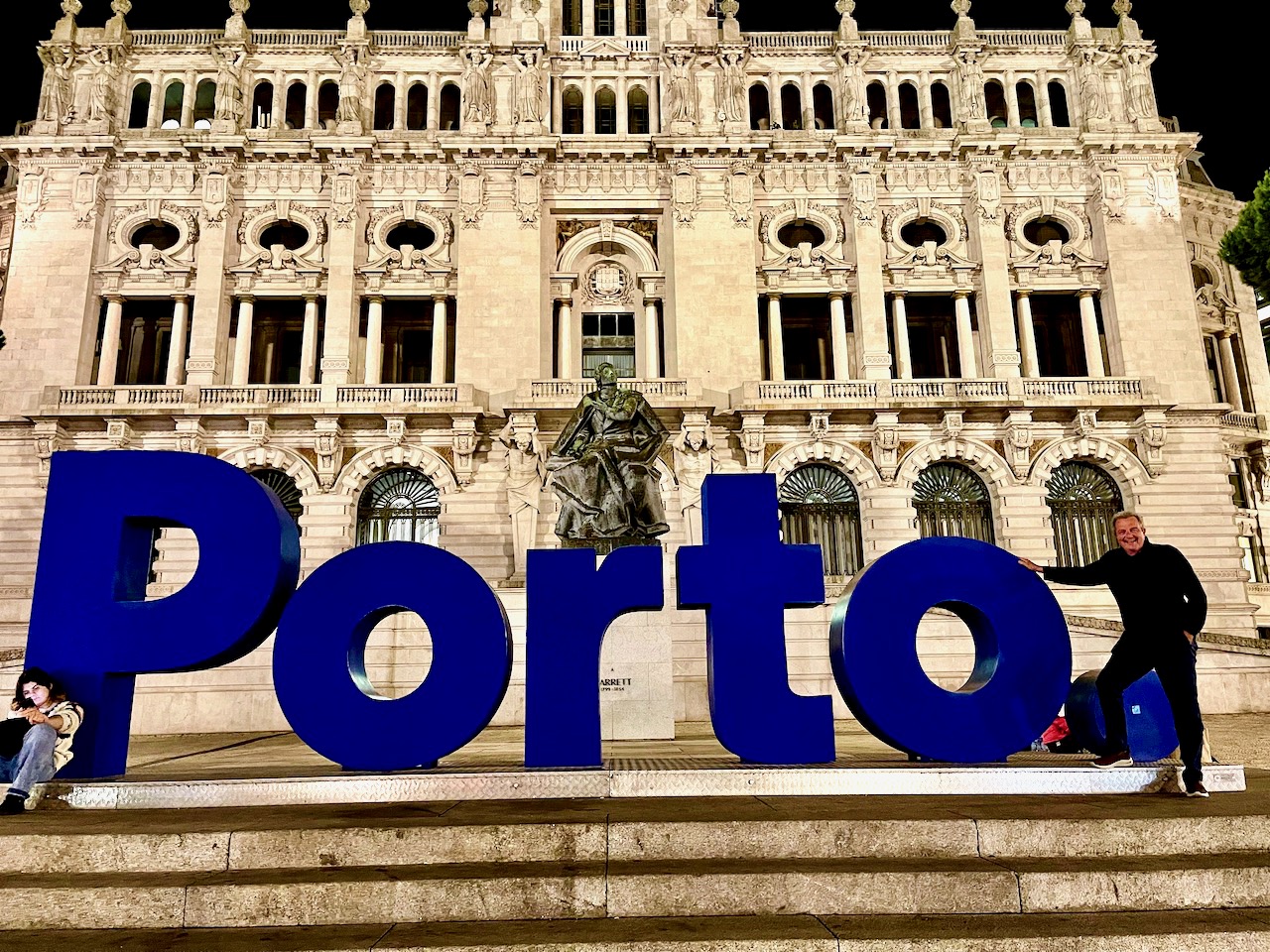
Chapter Sixteen: Enjoying Energizing Porto
March 13, 2023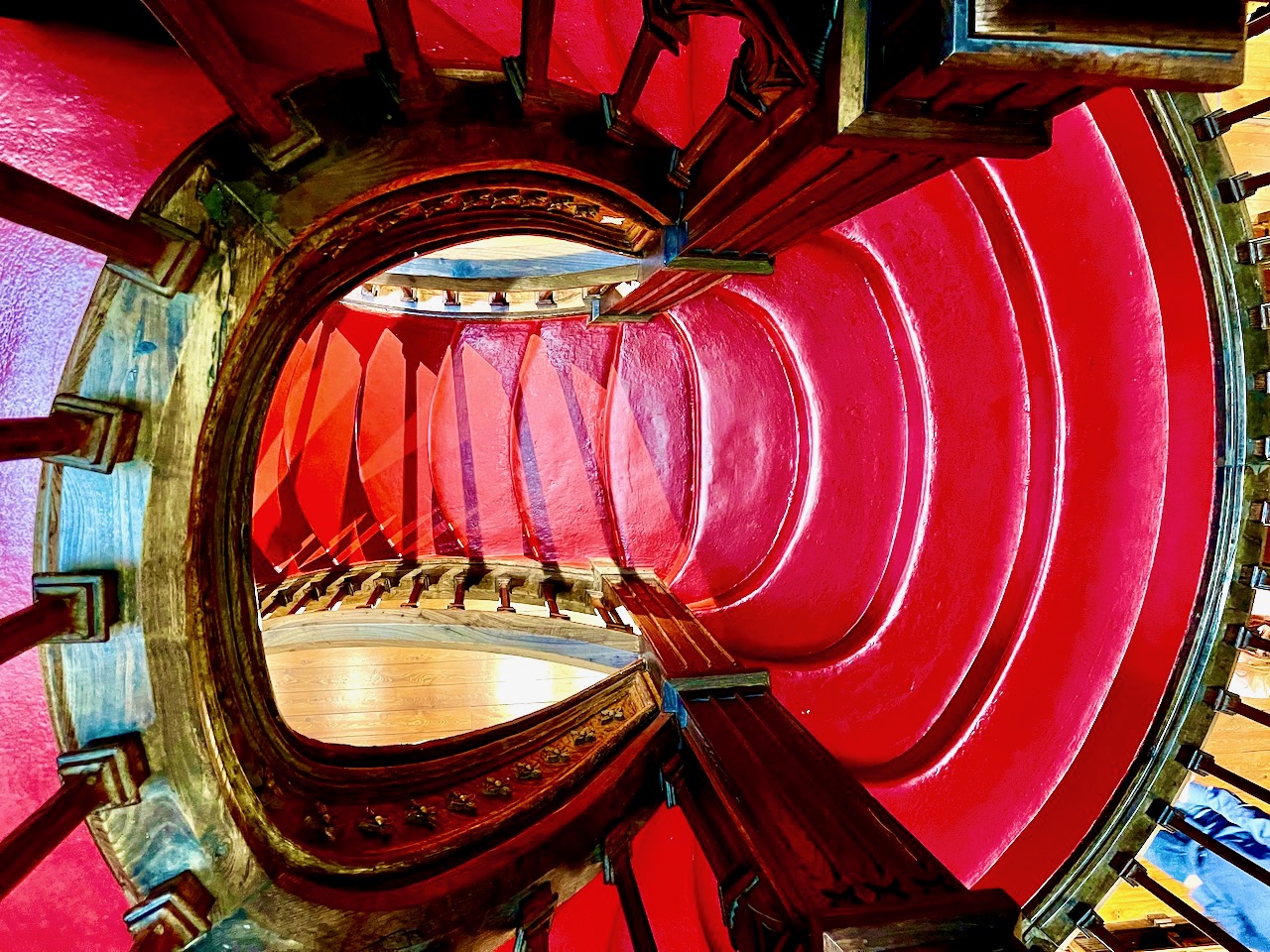
Chapter Eighteen: Seeing Red & Taking In More Of Porto’s Sights
April 2, 2023Falling For Portugal: A Mai Tai Tom “Trip” Report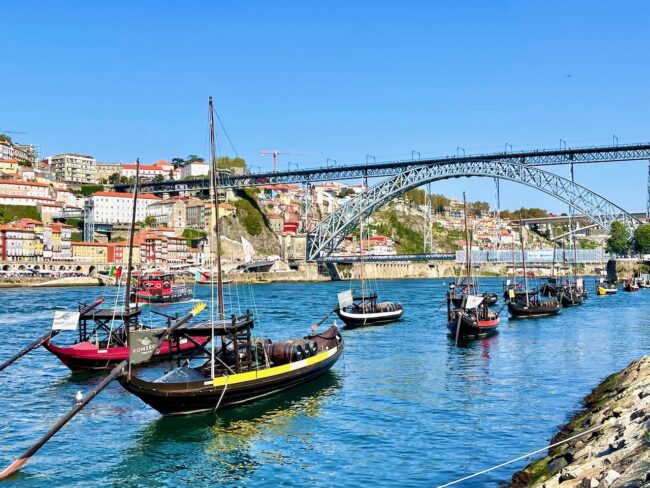
Chapter Seventeen: Historic Porto Sites and Beautiful Porto Sights
Day Nineteen: Ooh It’s A Holiday, On Track For Even More Azulejos, Strolling On The Road Of Flowers, Big Cat, Taking Stock Of A Palace, Are We At The Alhambra?, No Photos Of Francis, Crossing The Douro, Cheesy But Fun, Mary Renders Aid, Henry (Again), The Well-Situated Wine Store, Feline Friends and Skewered!
Cátia was already hard at work in the breakfast room at the In Porto Gallery Guesthouse baking the daily cake. Today’s offering was going to be Yoghurt, which we would eat a slice of later in the afternoon. Cátia warned us that some places might be closed due to Portugal Republic Day, a holiday commemorating the overthrow of the monarchy (the House of Bragança) in 1910.
After breakfast we headed out with Kim and Mary to visit Mercado do Bolhão. The stalls were empty, but then we remembered (we all have the memory of a gnat) … that today was a holiday.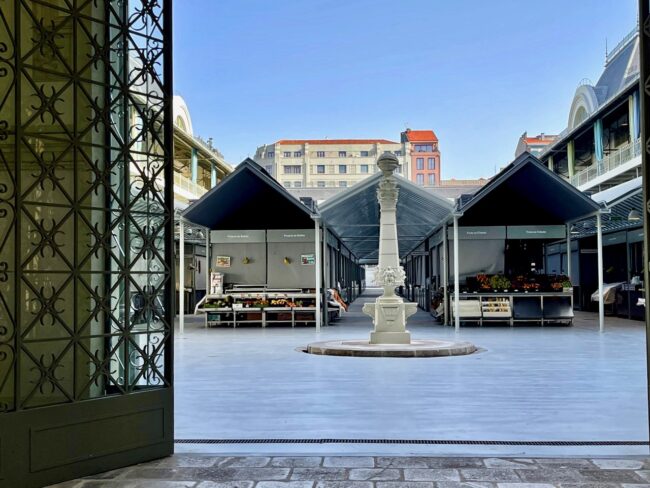
We detoured to show Kim and Marty the amazing azulejos of São Bento Railway Station. On the short walk we passed a familiarly named café we had seen in Lisbon and other buildings.
São Bento Railway Station was named after a Benedictine monastery that dated back to the 16th century, but was leveled in a fire in 1783.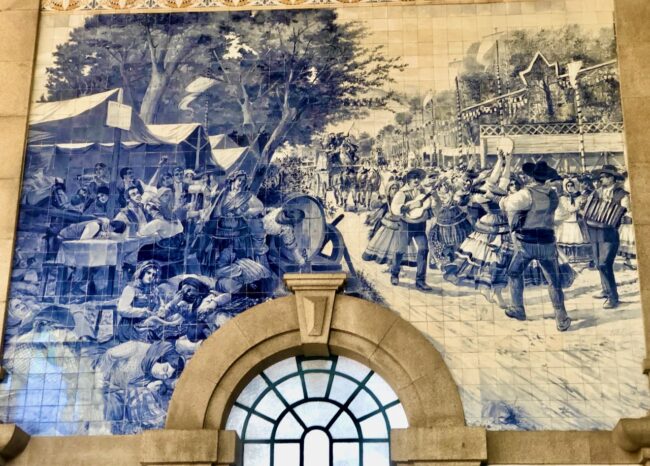
Once again, it was full of people admiring the beautiful tiles.
On a gorgeous Porto holiday morning, there were lots of people enjoying the sunshine and the sights Porto has to offer.
Cátia had told us there were three streets immediately outside the train station that lead down to the water. She recommended that we walk along the Rua das Flores (Street of Flowers), a street that has been here since 1521. It was built on land owned by the Bishop of Porto.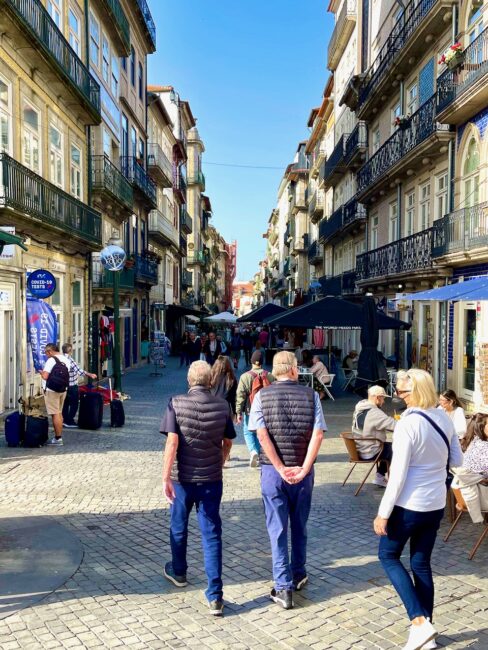
We hadn’t strolled too far on Rua das Flores when we saw a large blue cat peering around the corner. It stood tall on Rua Afonso Martins Alho, which I learned is the “smallest street in Porto.” The mural is titled “Perspéntic” by an artist known as Liqen. We are really getting into street art.
Faster than a speeding bullet, we passed by stores with colorful displays.
Sadly (for me, anyway), the 16th-century Igreja da Misericórdia was not open, but that turned out to be a blessing.
During our four days here, the streets of Porto were filled with music.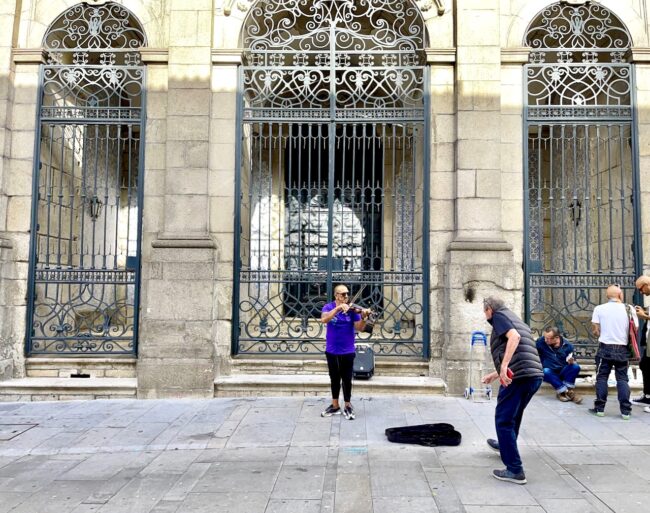
It seemed to us that more than Lisbon, Porto really seemed to be attempting to revitalize many parts of the city. That might not be entirely true, but that was certainly the perception we got during our stay.
We arrived at Palácio da Bolsa a little before 11 a.m. It was one of the sights I had really wanted to visit. Walking inside I remembered I had forgotten the only way to see the palace is with a tour, which I had read should be booked in advance. Fortuitously, there was an English tour starting in a few minutes, unfortunately there was a line as we watched the clock tick down on the scoreboard showing how many tickets were still available. We managed to purchase the last two slots as the tour group disappeared down the hallway. Now I was glad we had been shut out at the Igreja da Misericórdia as the next English tour wasn’t for another hour.
Built in the 19th century, Palácio da Bolsa was constructed as Porto’s stock exchange. Our first stop was inside the Pátio das Nações (Nations’ Courtyard). Designed in 1880, there are a lot of (25) “coats of arms of Portugal and the countries with which it had economic relations in the 19th century.” It’s topped by an octagonal dome. Pretty spectacular start.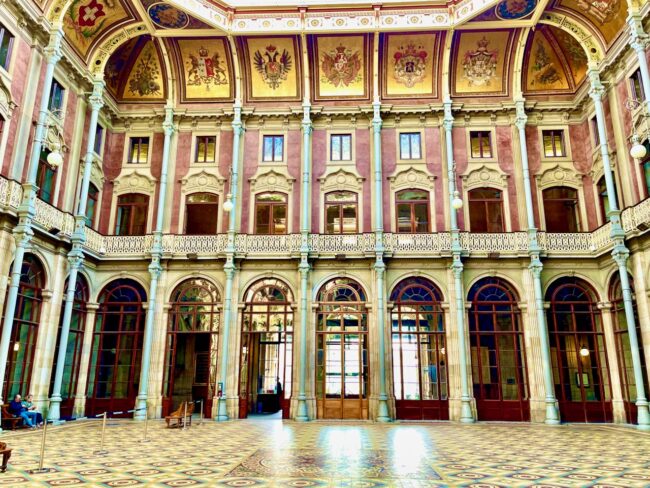
It was time to climb the Noble or Grand Staircase to see some of the palace’s rooms.
As always, things were looking up for Tracy …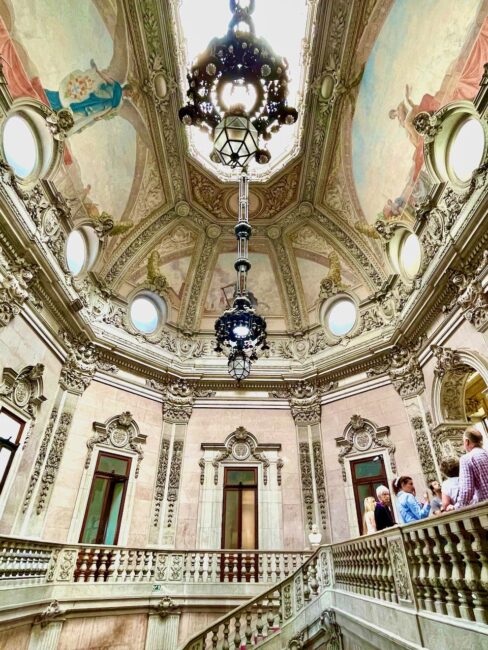
… as we climbed the marble and granite staircase. Frescoes adorn the walls and ceiling.
And, as always, she saw the light.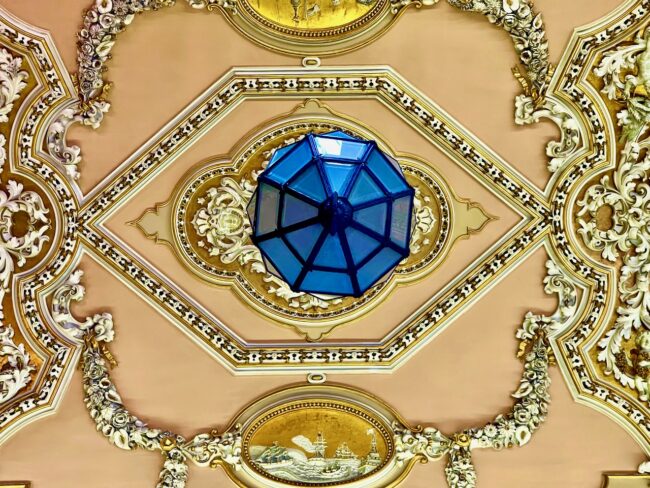
The view back to the majestic courtyard made for quite a sight.
A colorful corridor led to the first room upstairs.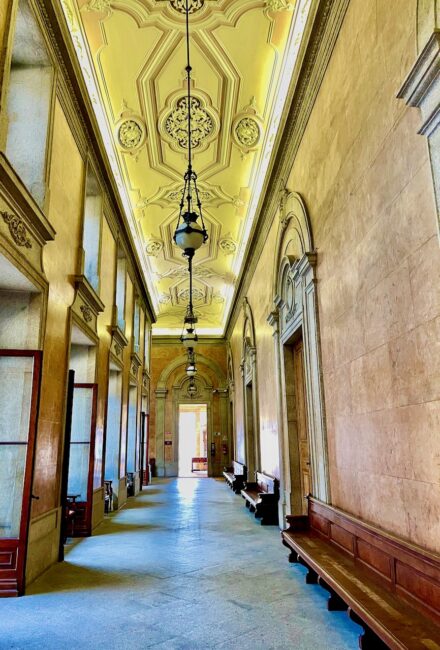
We crammed into the Sala do Tribunal (Tribunal Room), which was the courtroom of the former Court of Commerce.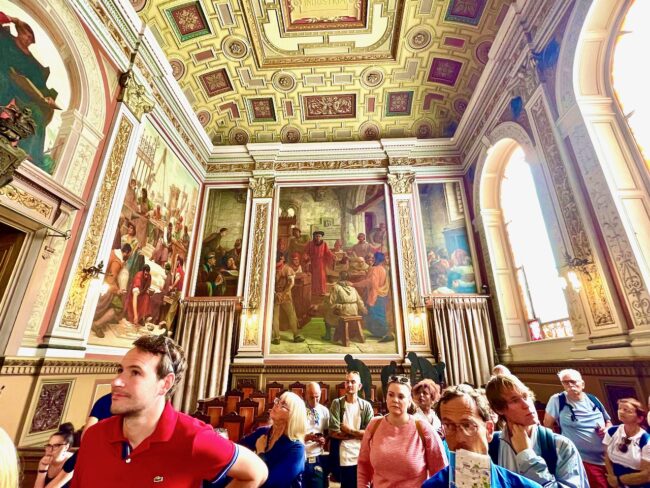
This is the room where disagreements among merchants were settled. Many of the paintings depict the port trade here and in the Douro Valley.
Tracy loved the ceiling in this room, and took many photos while the rest of us listened to our tour guide.
It “represents the law that protects commerce and industry.”
I don’t know when she ducked out to take this photo of the palace cloisters, but she would sneak back to a couple of rooms along the way to get some photos sans people.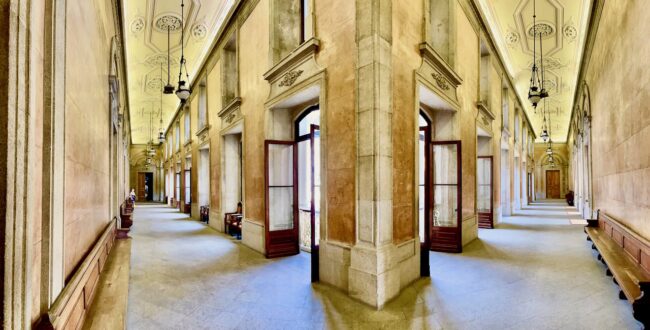
Next up, the Former Presidents Hall.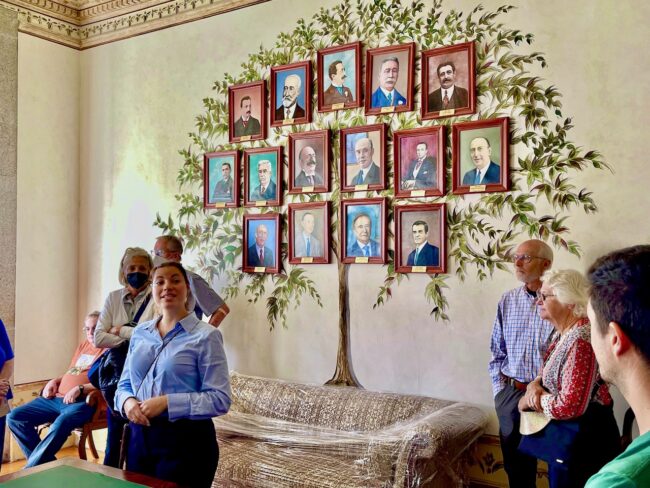
Outside we could see the Statue of Henry The Navigator in the park across the street and in the distance the Ponte de Dom Luís I, which we would walk across a couple of times on our stay.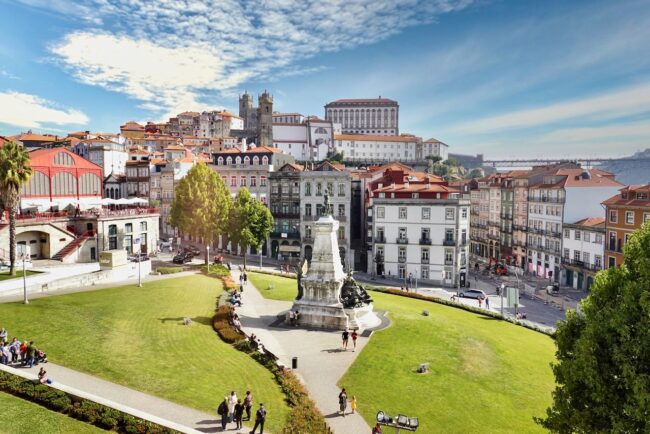
Tracy thought this might be an inkwell, but it’s pretty whatever it is.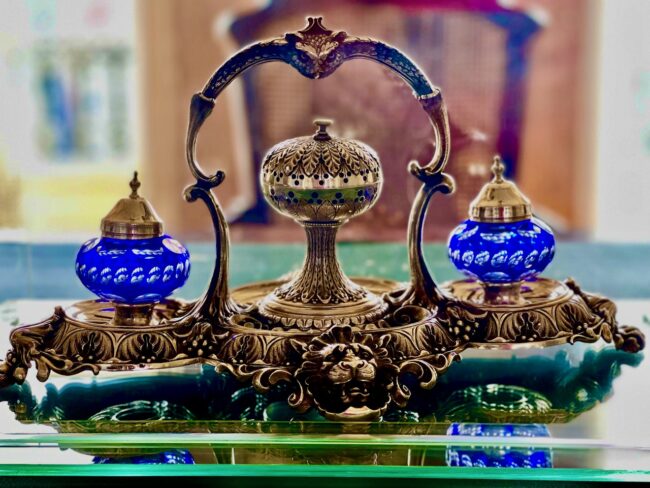
Next up, we admired the Salo do Presidente (President’s Room).
The Sala das Assembleias Gerais (General Assembly Hall) is still utilized to host the general assembly of Porto’s commercial association once a year and to host other events.
Our guide told us that although the room looks like it is constructed of wood, it is actually plaster.
We visited the Portraits Room, where true to its name, are portraits of the “six previous kings of the Bragança Dynasty.”
The Sala Dourada (Golden Room) has a ceiling decorated in gold leaf.
We were nearing the end of the upstairs portion of the tour.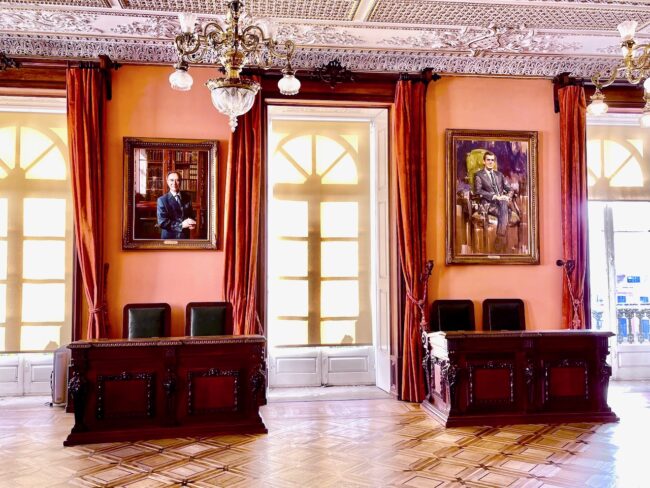
Although most of these rooms were spectacular, the next room transported us back to Granada, Spain.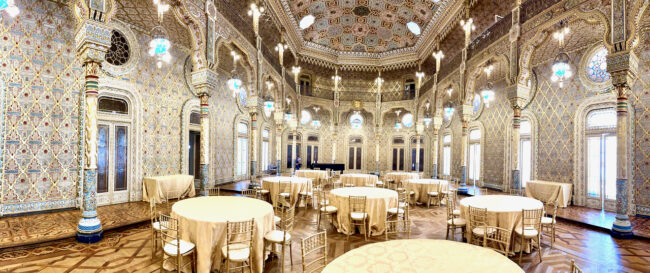
The Arabian Room is decorated in Moorish Revival and is said to be patterned after the Alhambra. It was renovated in 2009-2010.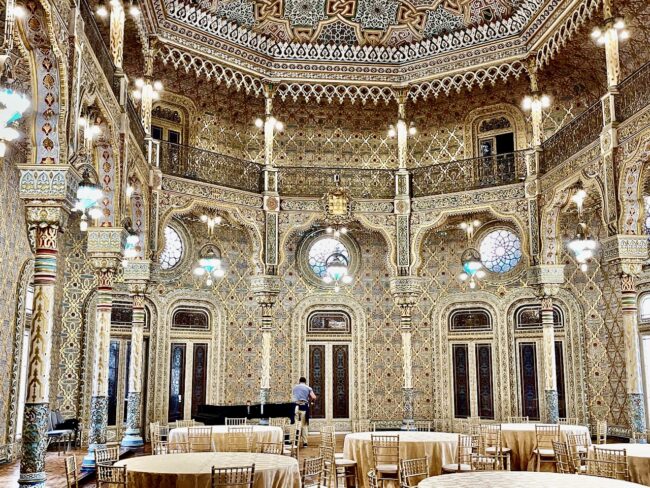
And they did a hell of a job.
There were spectacular doors …
… both coming in and out.
The intricate tile work was stunning.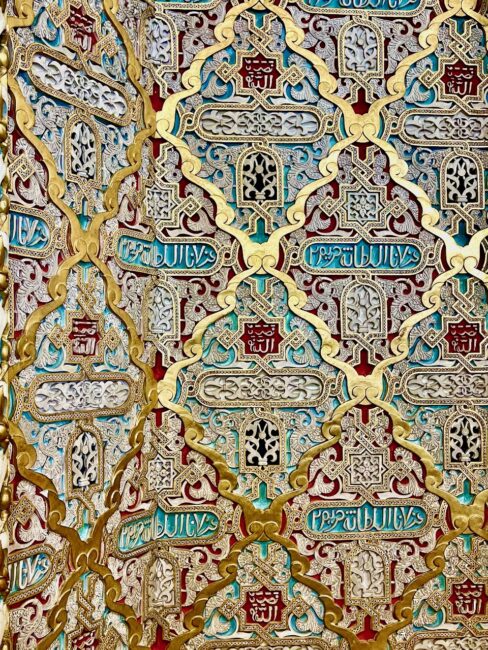 Walking down the staircase, we thought the tour was over, but we got one last surprise.
Walking down the staircase, we thought the tour was over, but we got one last surprise.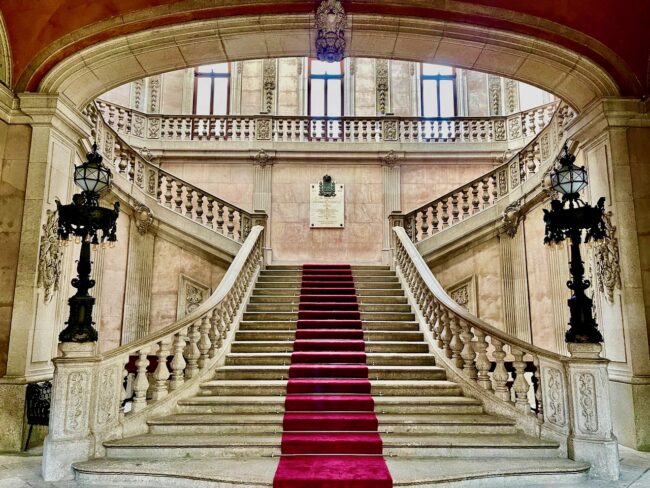
The library at the palace contains priceless books and is usually not available to tour.
Luckily for us, today it was open.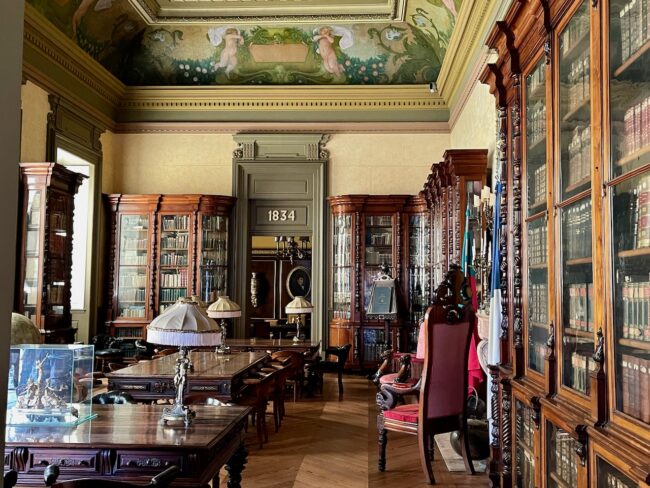
A short stroll and we arrived at our next stop.
The Igreja de São Francisco is known for its spectacular gilt carvings and gold rococo. 
Sadly, since it is a place of worship you cannot take photos of its magnificent interior. I wanted to, but probably would have felt gilt-y. Of course, after we visited we learned you could take photos. This is why I don’t usually follow photo rules, especially because they are rarely enforced and, like here, confusing.(photo from wiki commons)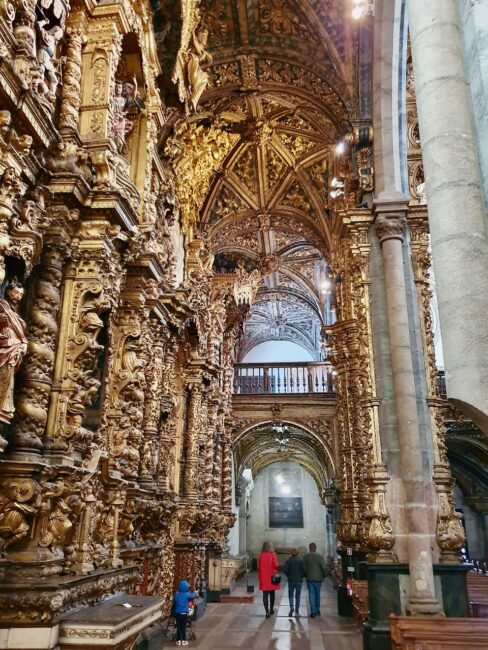
There was an adjacent smaller church where photos are allowed.
We didn’t spend too long in the chapel.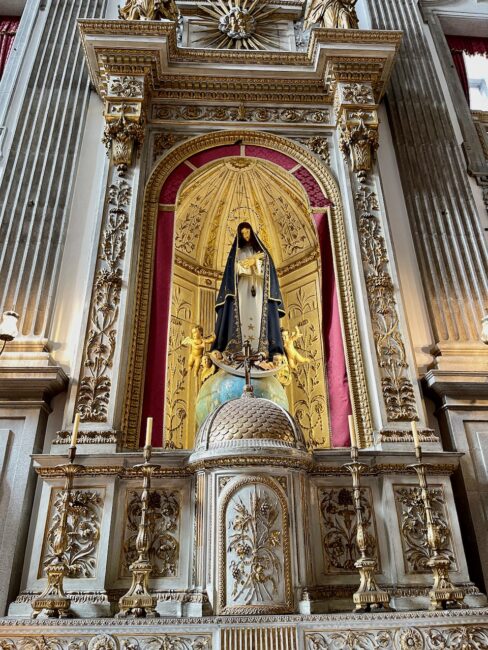
There’s also a museum displaying religious …
… and other artifacts and paintings.
Back in the day, this was used to transport women and the infirm around town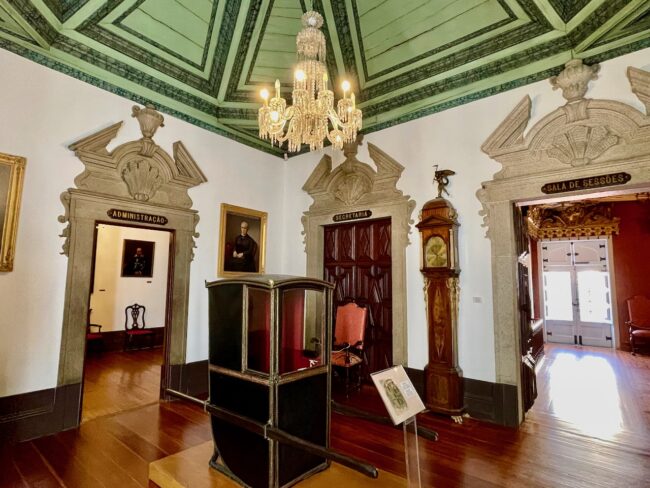
This photo is from the Sala de Sessoes (Meeting Room) in the Casa de Despachos (Dispatch House of the Order)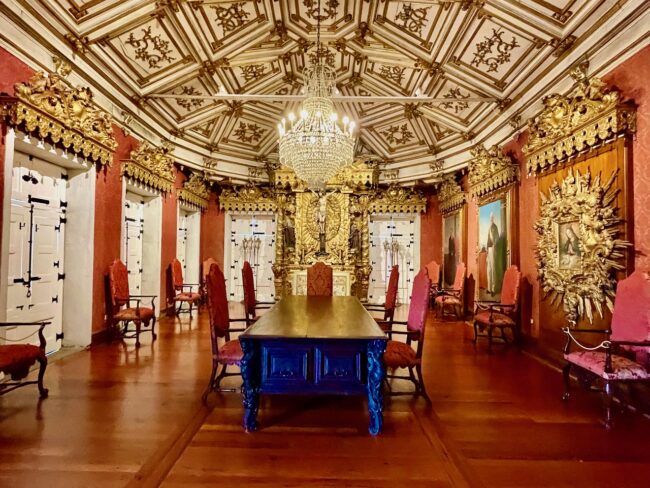
It was time to go down to the catacombs.
As catacombs go, this is an interesting one.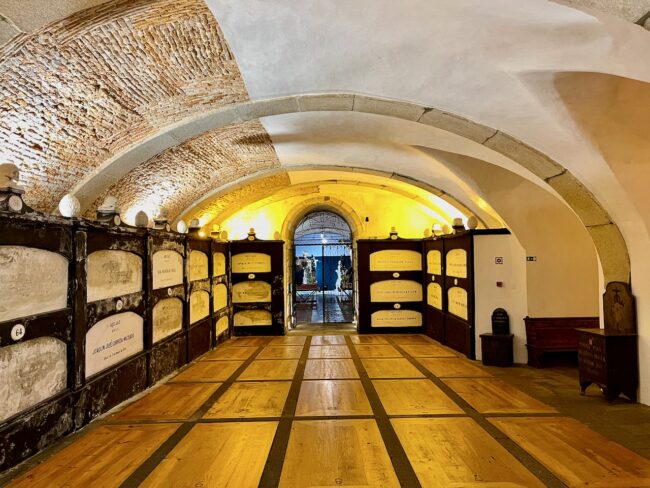
The catacombs contain the tombs of some of Porto’s nobility and Franciscan Friars.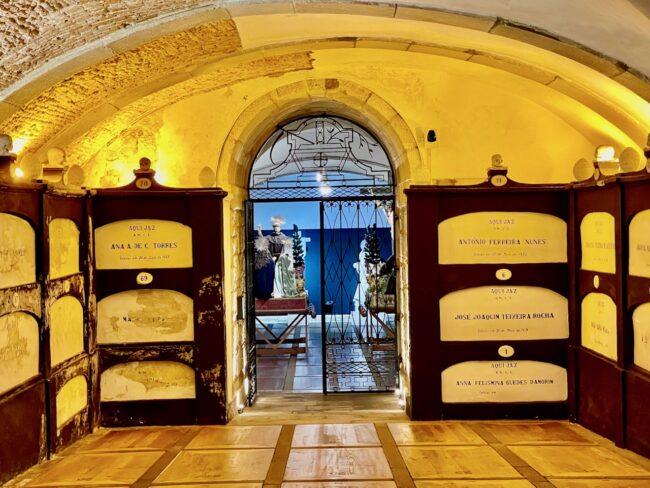
If you had the money and were a member of one of Porto’s wealthy families, you could be interred in a family tomb.
There are plenty of them here.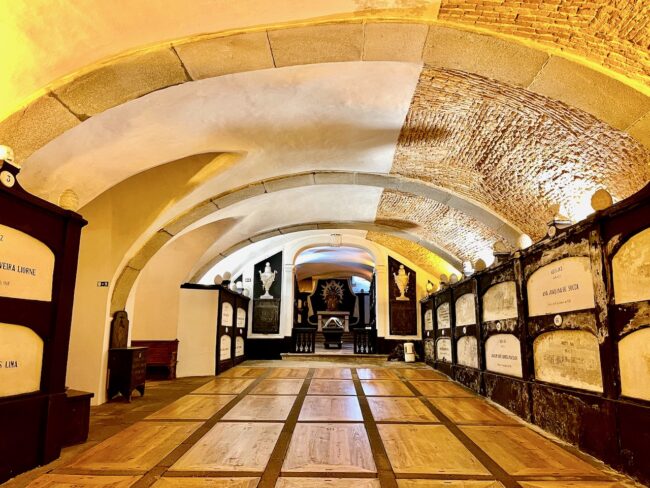
However, for the less fortunate or impoverished their bones are buried underneath where we were walking. Through this grated glass window are a some of the piles of human bones on which we were walking upon. Quite a contrast to the priceless gold and statues that adorn the church.
Back outside in the sunshine, we (and many others) were walking along the Cais de Ribeira.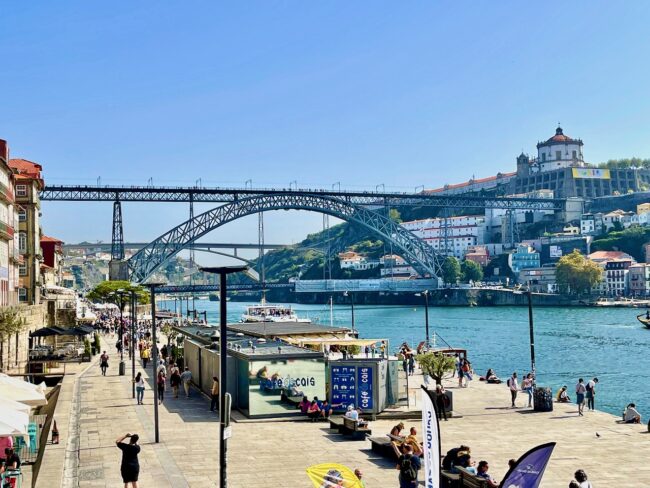
The colors of the surrounding buildings were striking …
… as were a lot of things in the area.
We considered eating lunch in this neighborhood but decided to cross the Ponte de Dom Luís I to Vila Nova de Gaia. If the bridge looks familiar that’s because an assistant to Gustave Eiffel designed and built the bridge in 1886.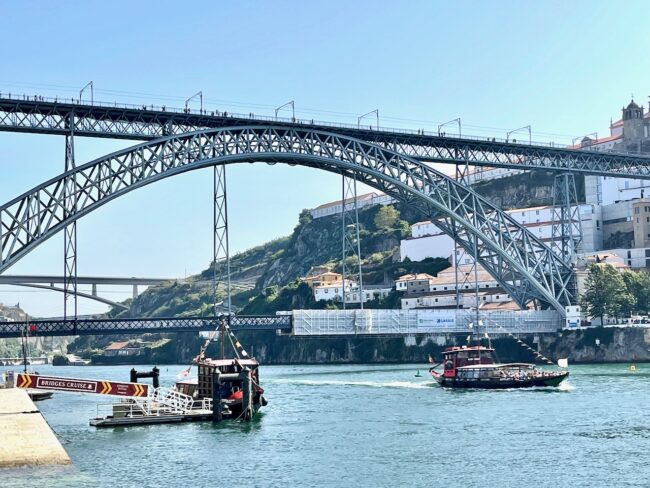
We took the low road (Avenida da Repúblic) across the bridge, but we did cross along the top tier later in the week.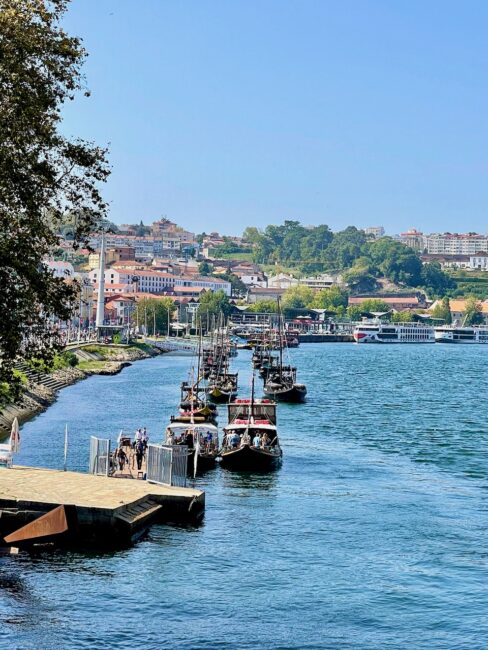
Once we crossed we looked back to the busy Ribeira.
Before leaving that morning, we had asked Cátia for a lunch recommendation in Gaia. She told us that the place with the most authentic Portuguese dishes was Tabernha do Manel. To make sure we did not repeat yesterday’s mistake, we wrote down the name so we would not forget.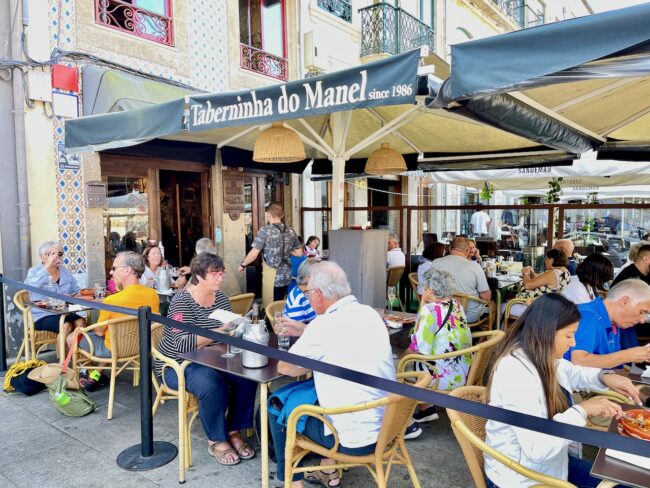
While waiting a short time for a table, we met a little four-legged creature who must have had a busy morning.
Seated inside, we saw a sign that we have adhered to since our college days.
Tracy was excited because they had one of her favorite dishes on the menu, Tempura Green Beans. I think we could have dined on just those and been happy. She and Mary also enjoyed a beet and walnut salad.
All our dishes were good, and Kim once again surprised us with his choice … eggs and French fries, while I had a very good prosciutto sandwich.
Outside, we gazed up at the Teleférico de Gaia passing overhead. Cátia had said riding it was something we could skip, so we did.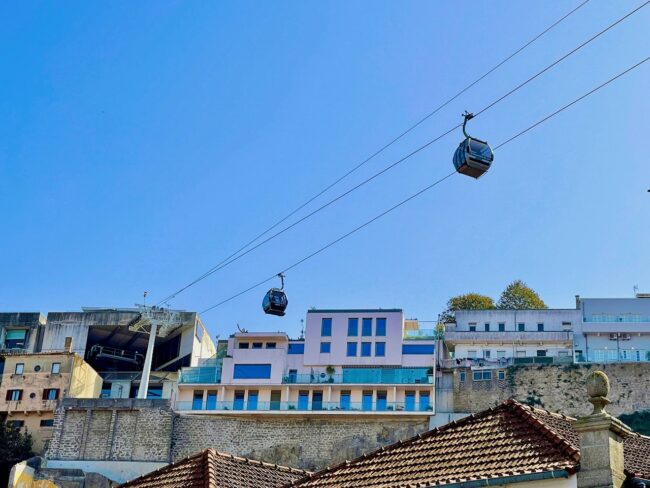
Kim and Mary decided to go back to the hotel while Tracy and I explored Gaia for a little while.
Mary to the Rescue (Yet Again): On Kim and Mary’s return trip, they came upon another accident scene, this time involving a bicyclist with a bleeding shin. Doing her best Florence Nightingale impression, Mary reached into her bottomless handbag of medicinal supplies and rendered first aid to the poor cyclist. Yet another emergency room visit averted by Mary. Yes, there’s something about Mary while on vacation!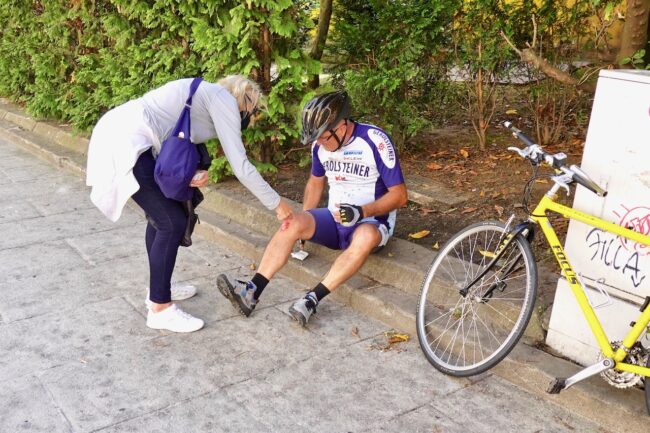
We savored the views back towards Porto. Love the rabelos carrying those barrels.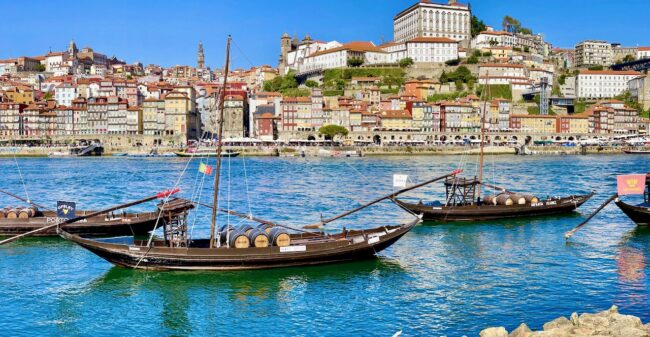
I had heard about a couple of cheesy tourist attractions on this side of the River Douro, and being cheesy tourists we entered The Fantastic World of Portuguese Cans.
For those of you who revel in colorful Portuguese cans of sardines in a circus-like atmosphere, this is your spot. This might be the same store we visited in Lisbon, but since that was about 35 bottles of wine ago I couldn’t be sure.
A few doors down is the Casa Portuguesa Pastel Bacalhau, another offshoot of its Lisbon counterpart. It celebrates “two icons of Portuguese gastronomy: codfish cake and Serra da Estrela PDO cheese.” Any place with a pipe organ has my name on it! The store is very Instagram friendly.
We really liked Bacalhau, but since we had just eaten, we passed on tasting.
This woman certainly knew how to play the room. Cheesy, yes, but it was still fun for a quick visit.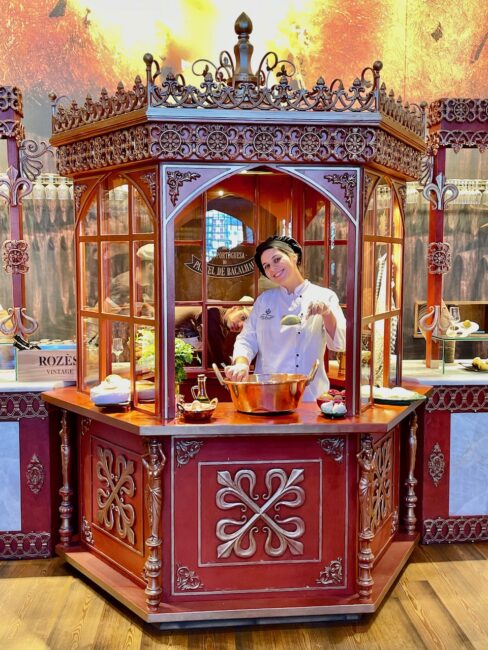
It was now decision time. It was nearly 3 p.m. Did we want to do a port tasting and then scurry back to our hotel? Or return to the hotel and sip wine on our patio? The patio won. Those rabelos still looked cool.
Considering the long walk back, I was glad to see a sign that for a few Euro we could hop a water taxi across to the Ribeira.
The ride was short and sweet …
… and soon we were deposited back in Porto. We walked up the hill to Infante D. Henrique Square across the street from the palace. This 1894 statue commemorated the 500th anniversary of the birth of Henry The Navigator.
Before heading into our lodging, we stopped in the conveniently located wine store on the corner.
After purchasing some Vinho, we rousted Kim and Mary from their room and proceeded to enjoy wine time on the patio, sharing the space with the neighborhood cats.
I was in relaxed vacation mode, but soon it was time for dinner. Although we eat a lot while traveling, we never gain weight. Walking is good for you.
For dinner we headed back toward the Rua das Flores.
On the way we were serenaded by a group of lovely young ladies.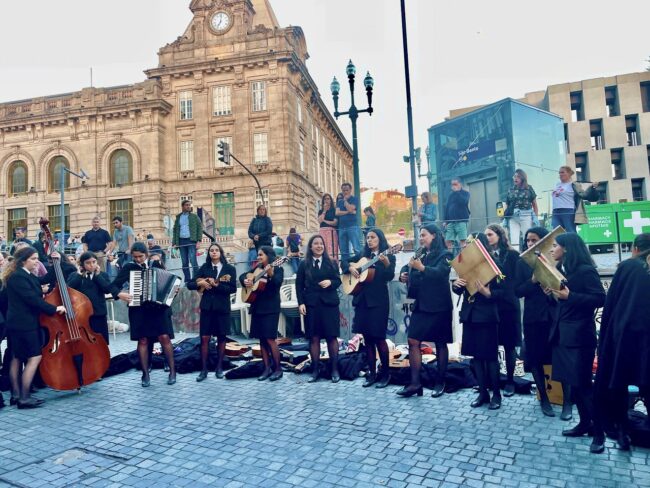
Just off Rua das Flores at 28 – 30, Rua dos Caldeireiros is Cozinha dos Lóios. The restaurant had a lively atmosphere, including a good selection of 70s songs on its playlist.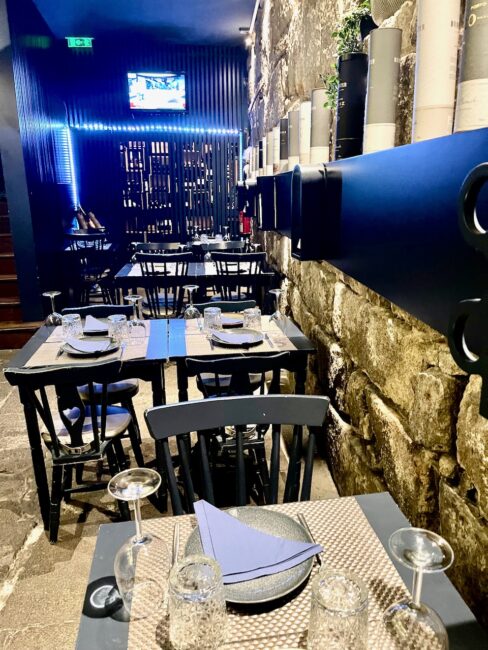
Dinner, once again, was very good. Mary went for a seafood pasta dish, while Kim tried the steak.
Tracy enjoyed her pork with grilled pineapple.
There was an apparatus on our table that I couldn’t figure out what it was for. When my Chicken Skewers with cheese arrived, I realized it was to help carefully remove the chicken from the skewers.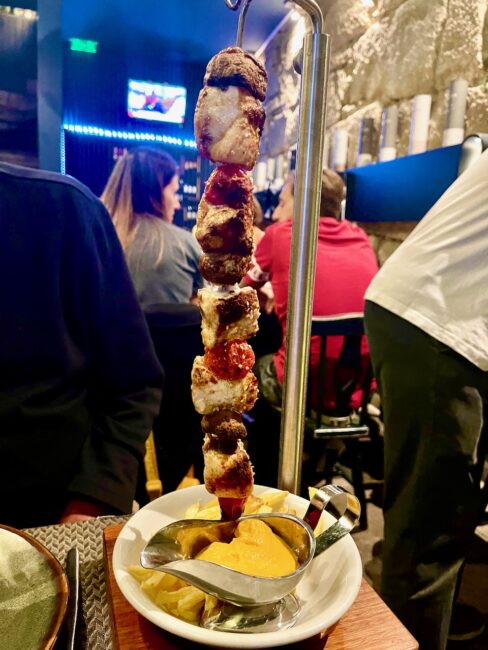
Once again, only one person left room for dessert. That, of course, would be me. The Key Lime Pie was stupendous, and Tracy dragged me kicking and screaming from the restaurant before I could order a second helping. Fun evening.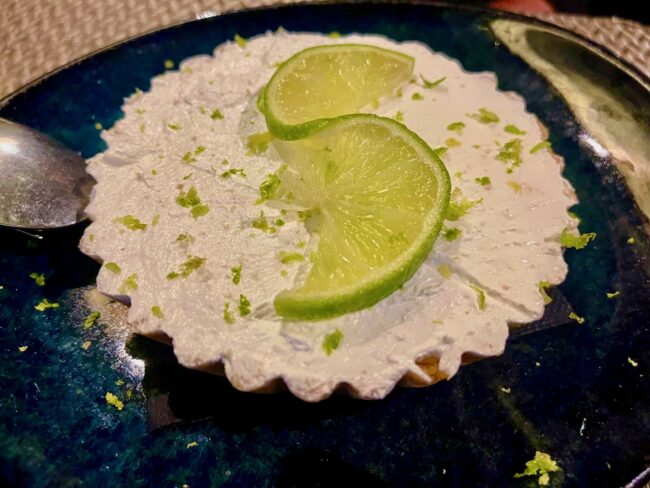
We passed the nearby church that we’d visit in a couple of days.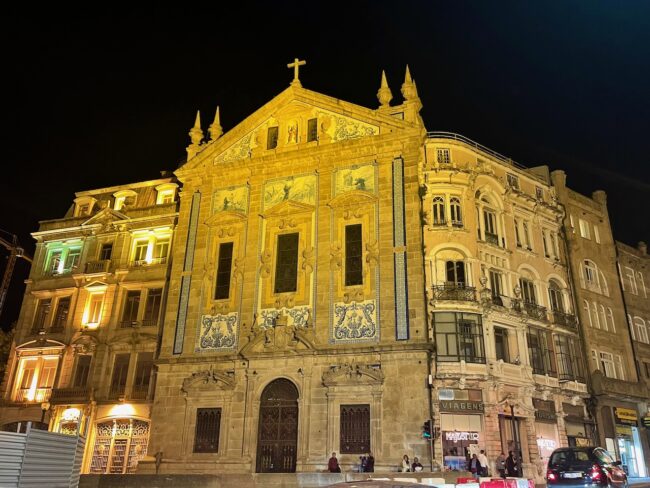
The following day would start with a visit to Porto’s Instagram “famous” bookstore with the colorful stairway, and where we would witness another terrible spill as we stood in line. Then it was a short walk to a pair of churches with a “Hidden House” located in between.
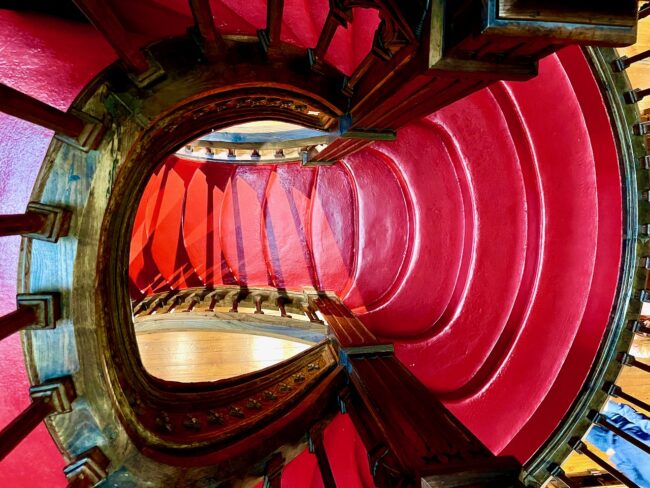 After tasting some pastries, we scouted out yet another church, passing by a cute restaurant with an open-air bar. Although it was 5 o’clock somewhere, it was still a little too early for us to imbibe (we must be getting older or maybe wiser?) After the church we’d visit a museum I had wanted to see, but unfortunately part of it was closed. Then we’d get a little high (not that kind) and visit a park and gardens with expansive views out over the River Douro.
After tasting some pastries, we scouted out yet another church, passing by a cute restaurant with an open-air bar. Although it was 5 o’clock somewhere, it was still a little too early for us to imbibe (we must be getting older or maybe wiser?) After the church we’d visit a museum I had wanted to see, but unfortunately part of it was closed. Then we’d get a little high (not that kind) and visit a park and gardens with expansive views out over the River Douro.
Lunch at the authentic Portuguese restaurant that we had missed the first afternoon, where a comedy of wine errors made for a funny experience. Tracy and I would head out on our own for dinner that evening at one of the top-rated restaurants in Porto. It lived up to its reputation … and more!
Next – Chapter Eighteen: Taking In More Of Porto’s Sights
Day Twenty: Hello Lello, The Broken Nose, Seeing Red, Two Churches Plus A Skinny House, Getting On BASE, Autumn Haze, Short Museum Stay, “That Ambulance Nearly Killed Me,” Where’s Buck Owens, Pretty Park, Spill The Wine and We’re Number One


